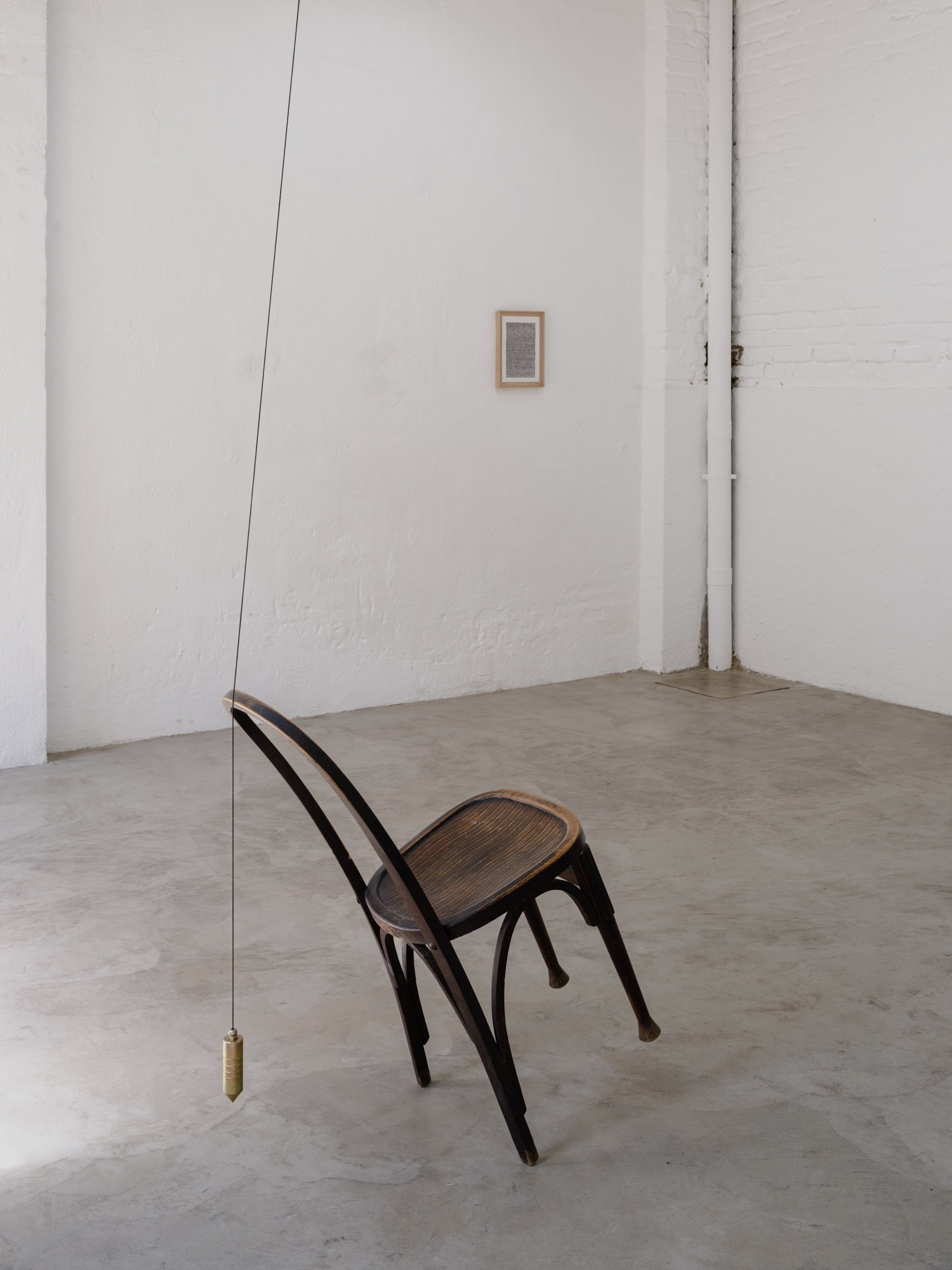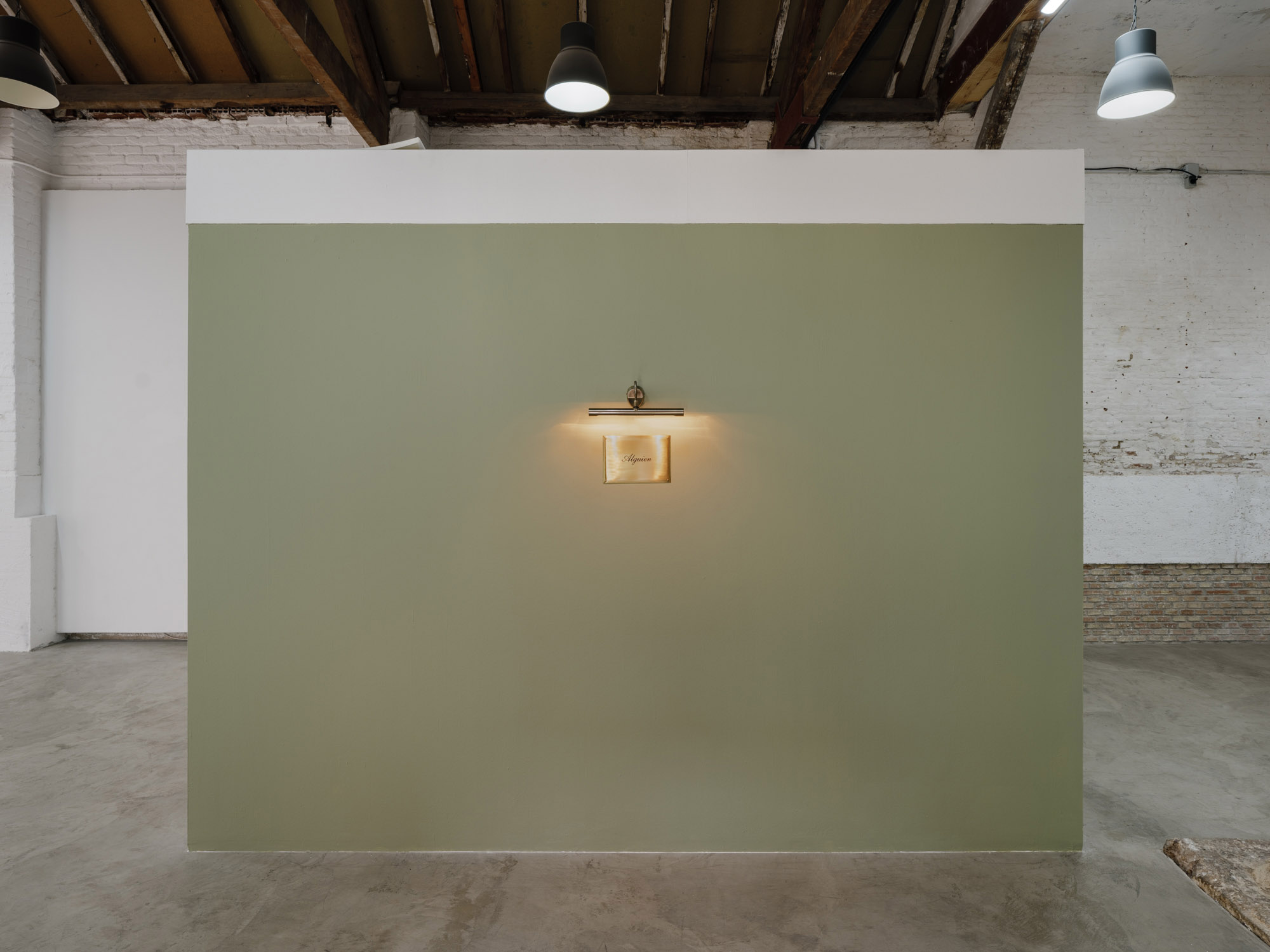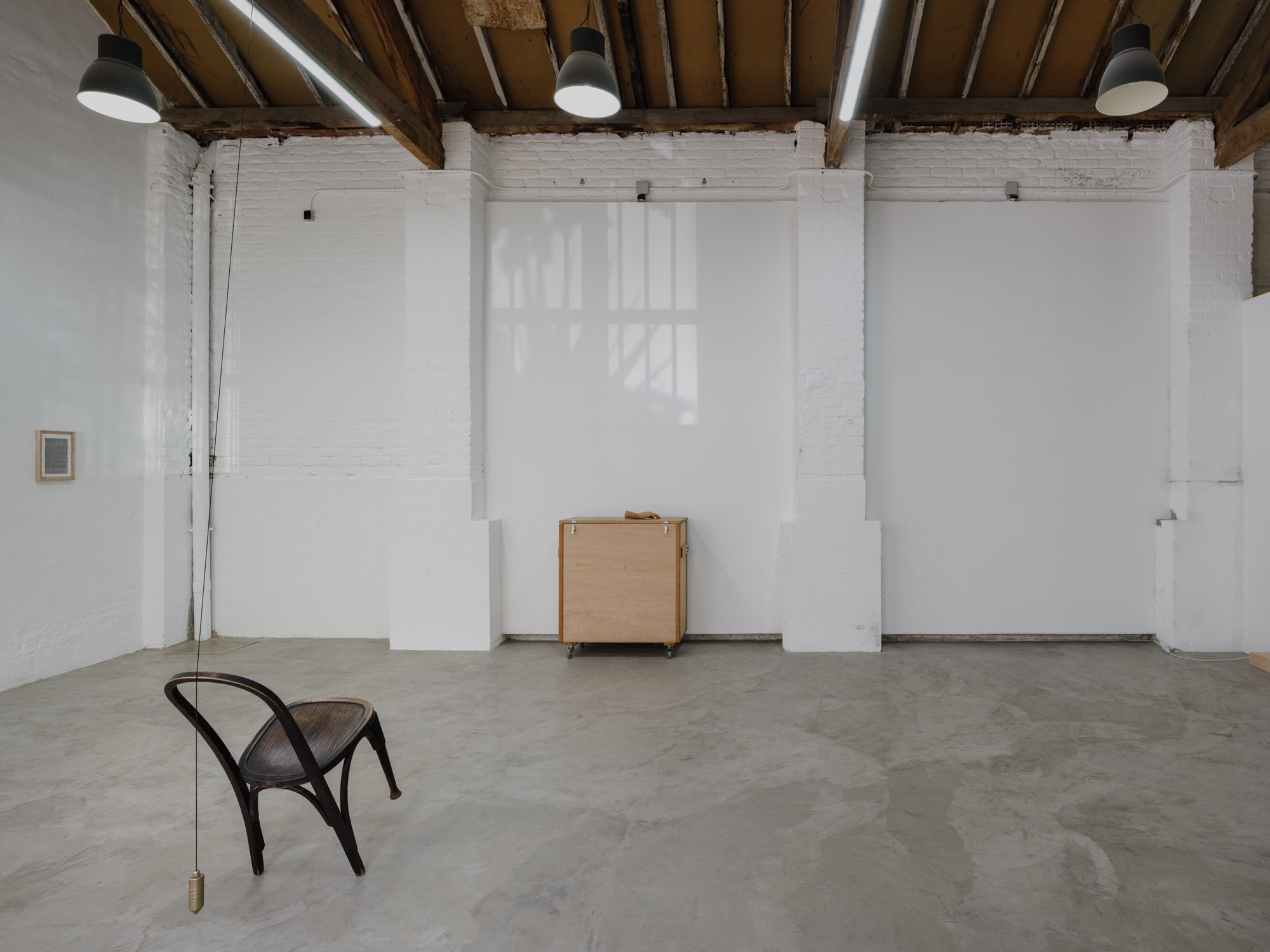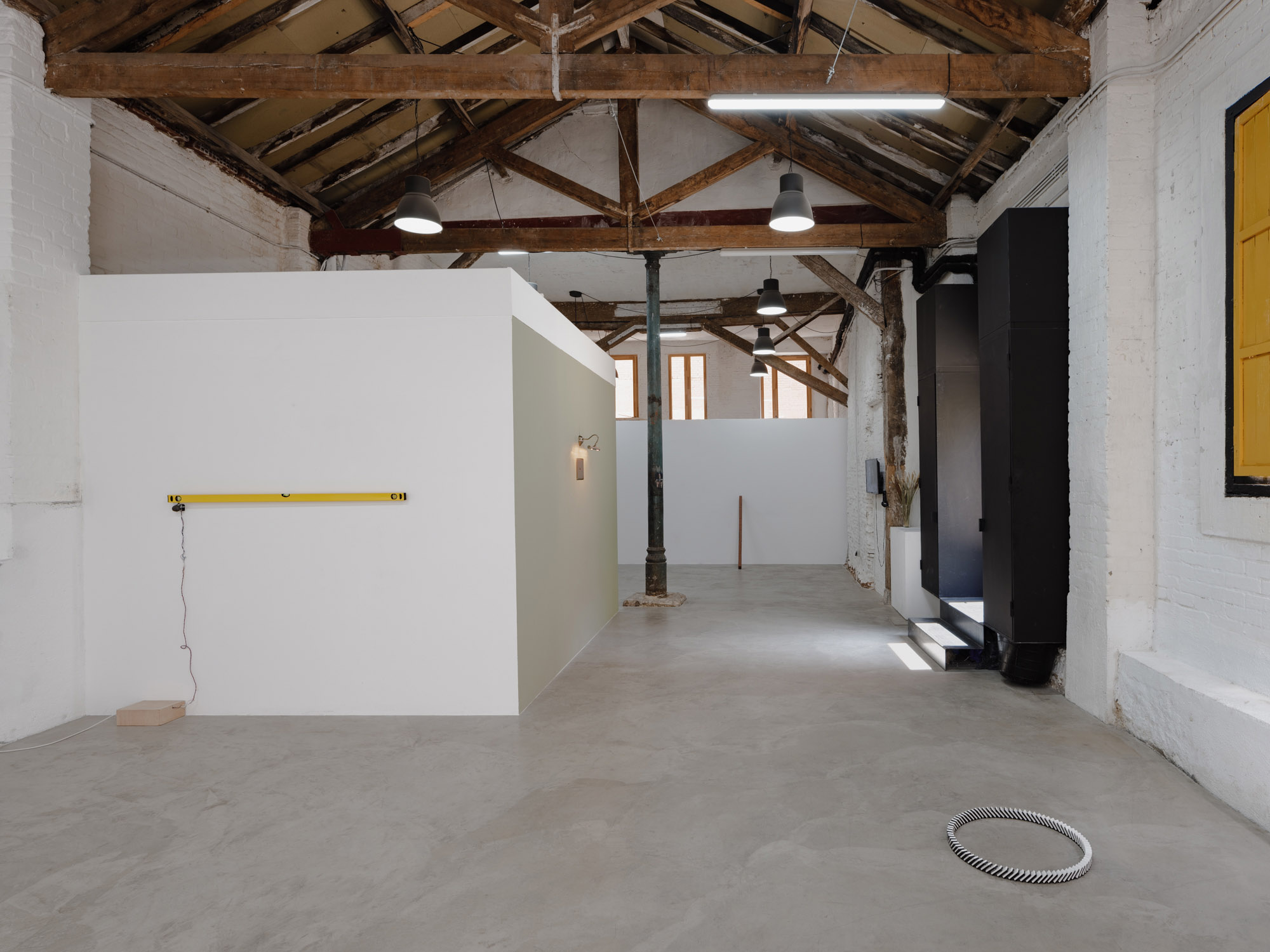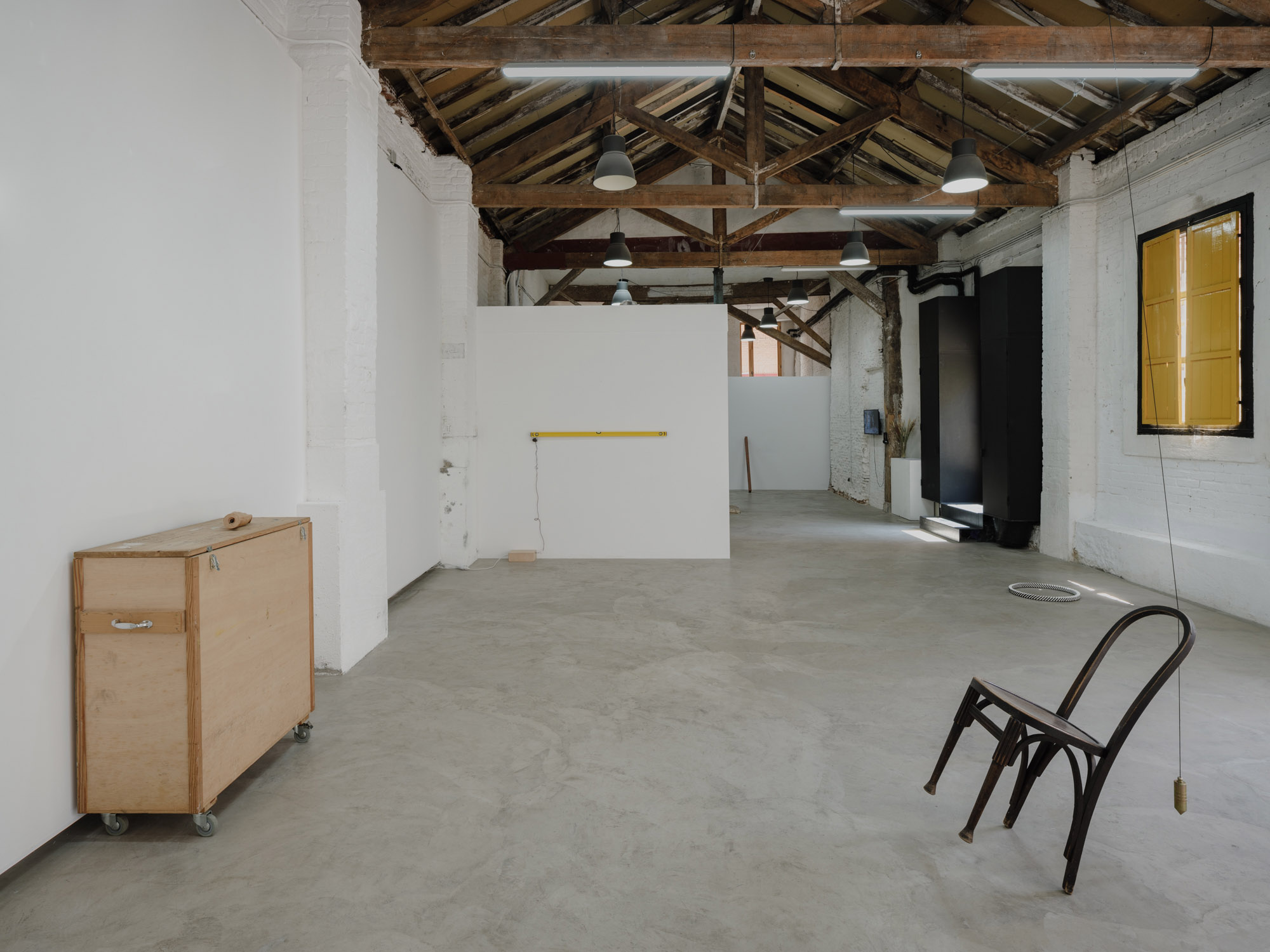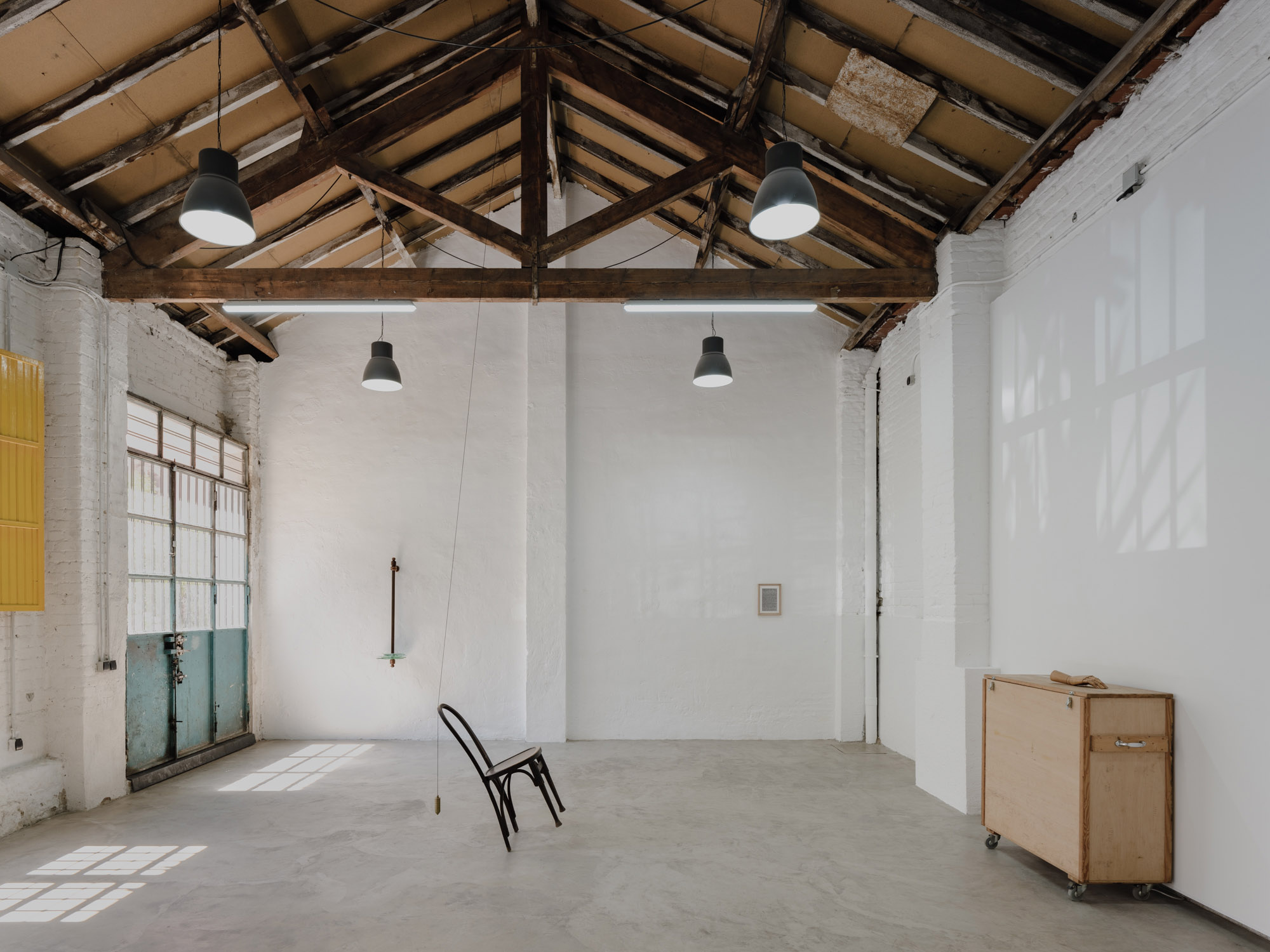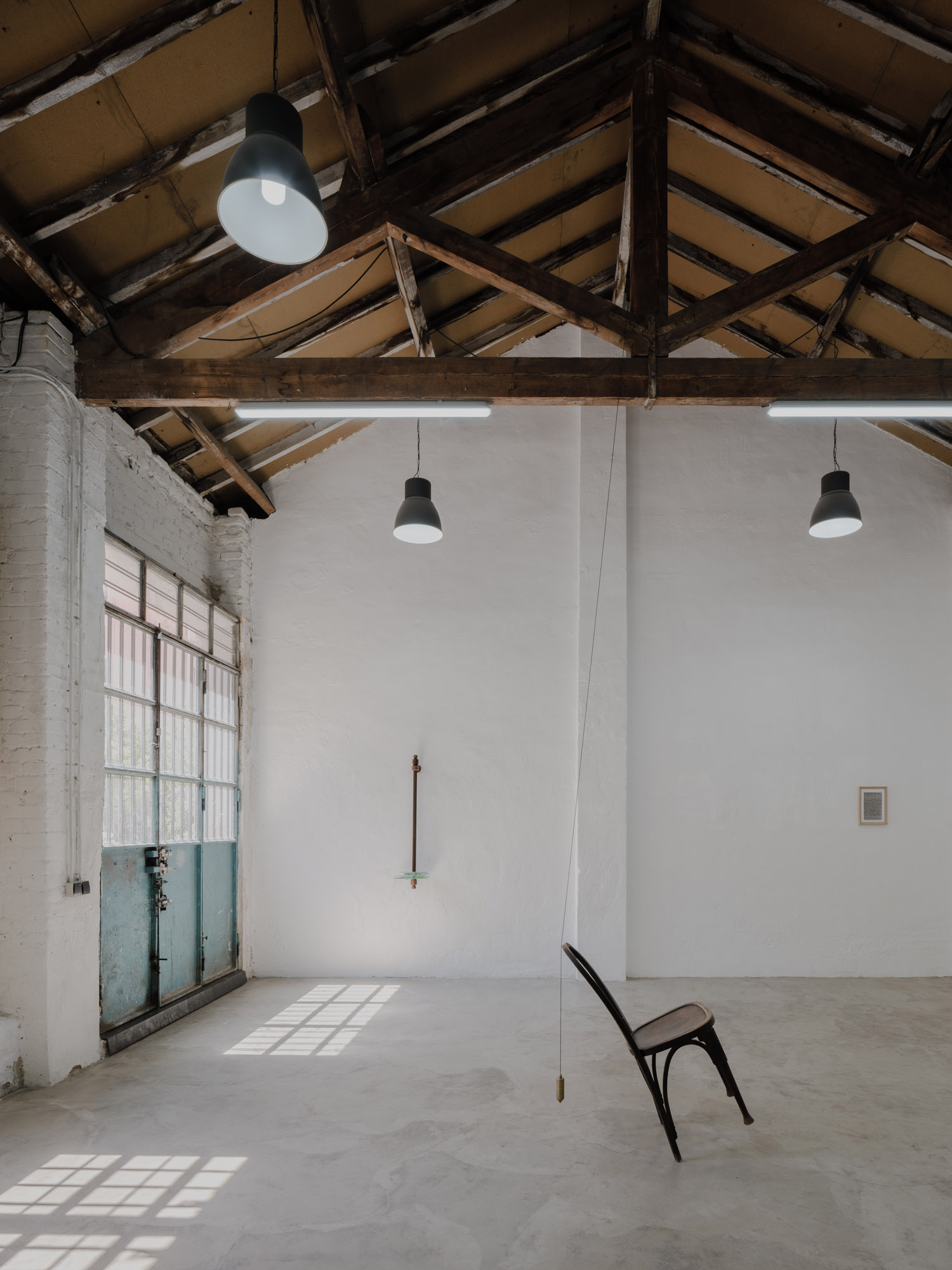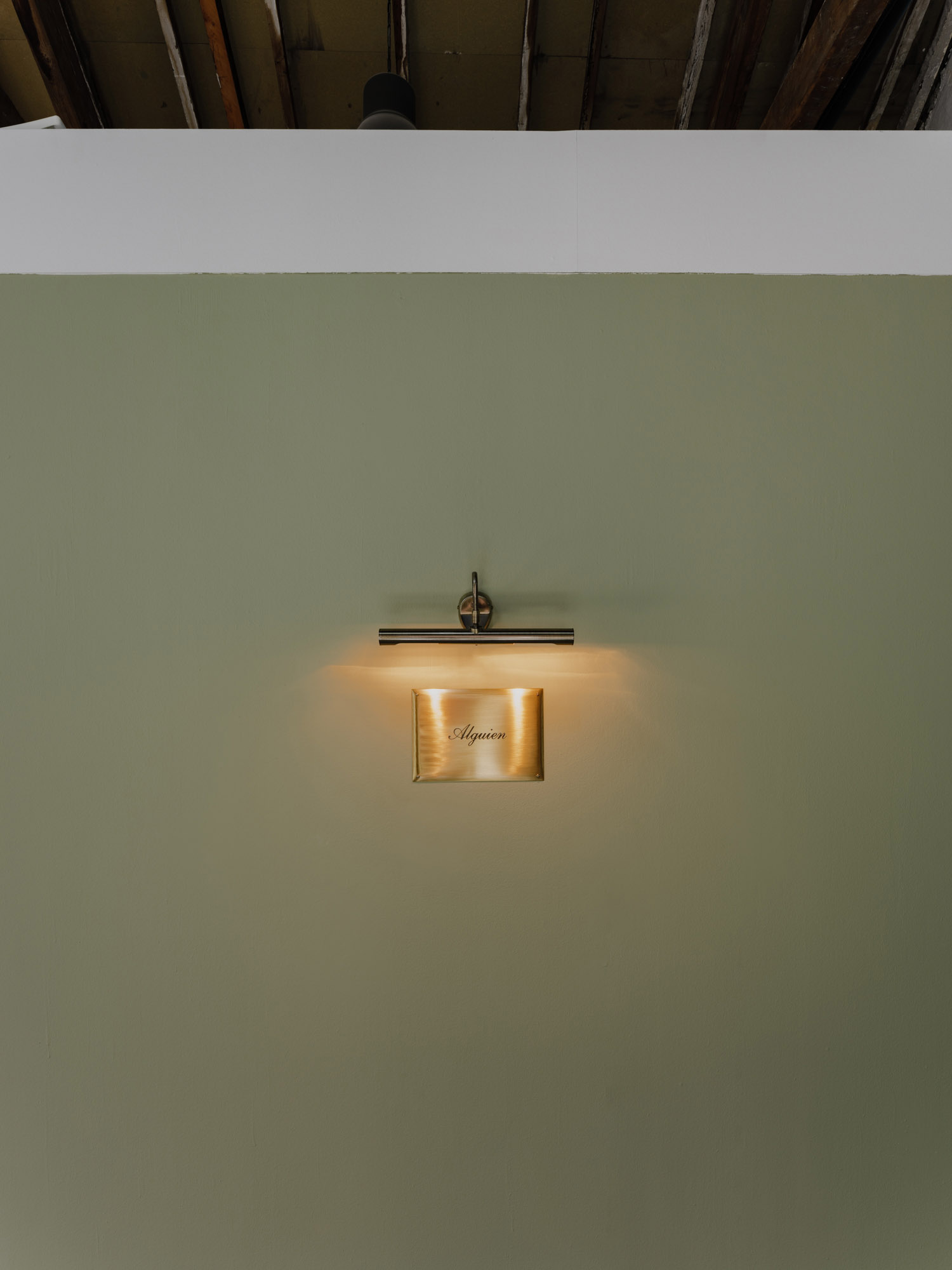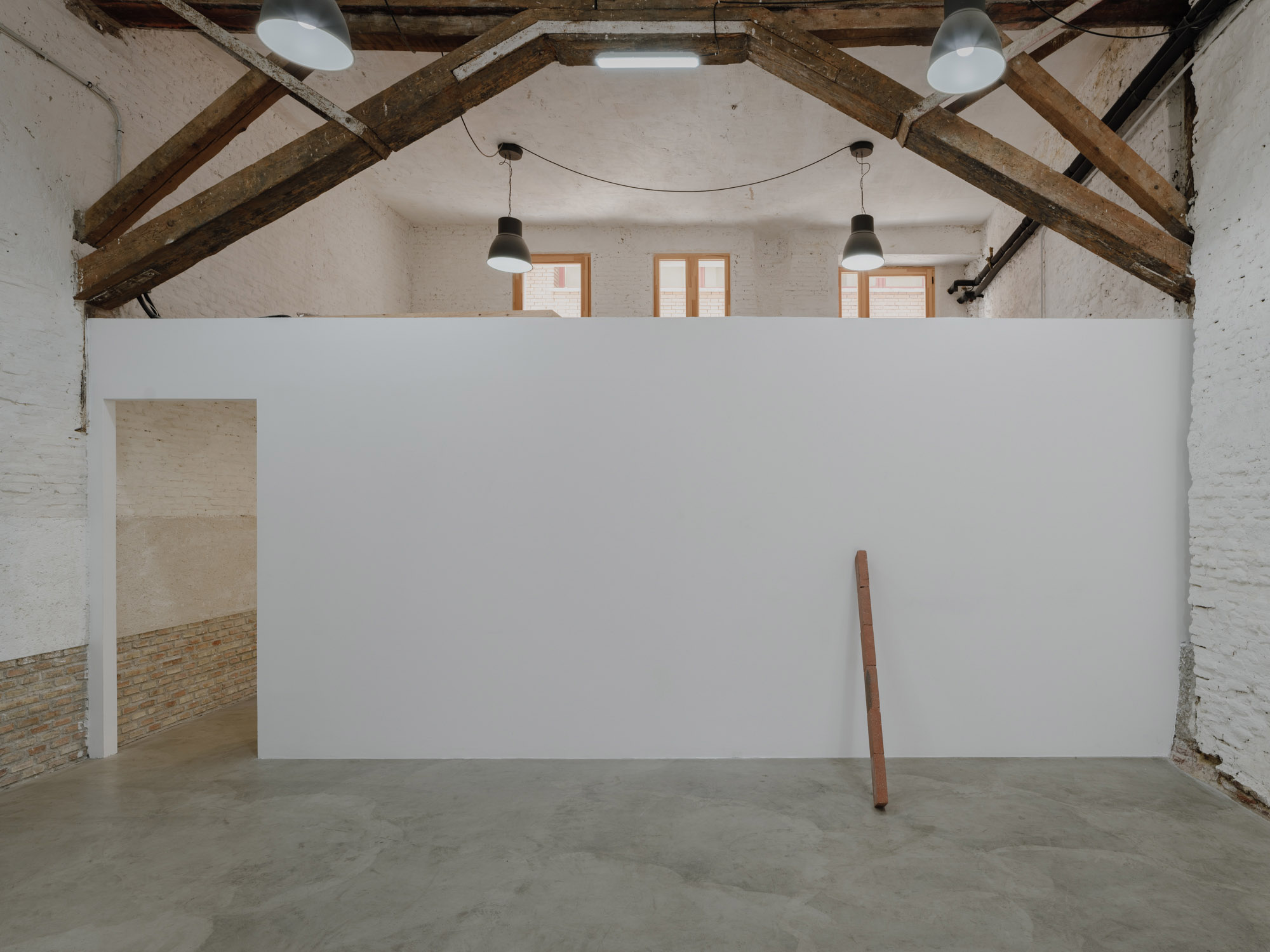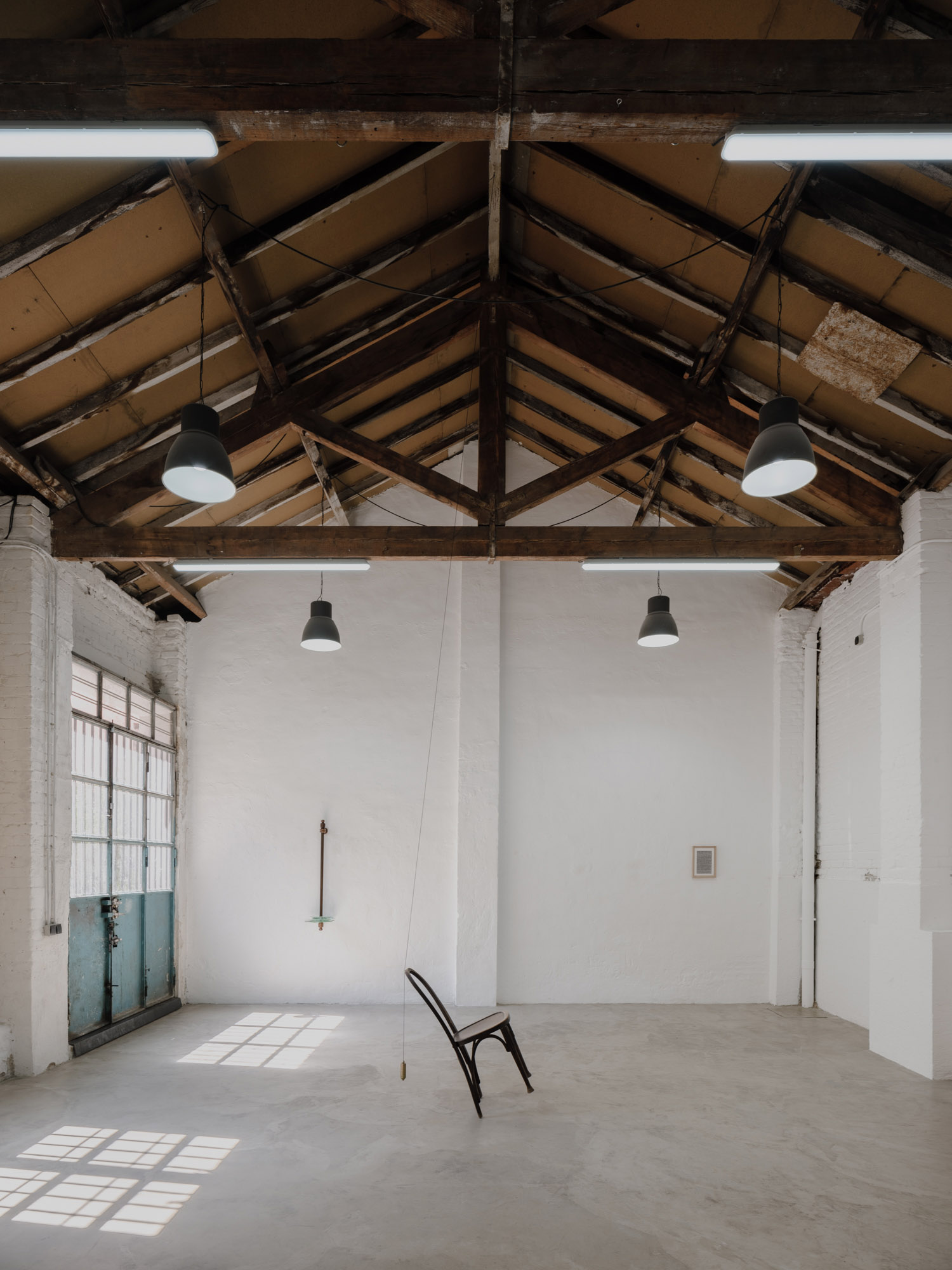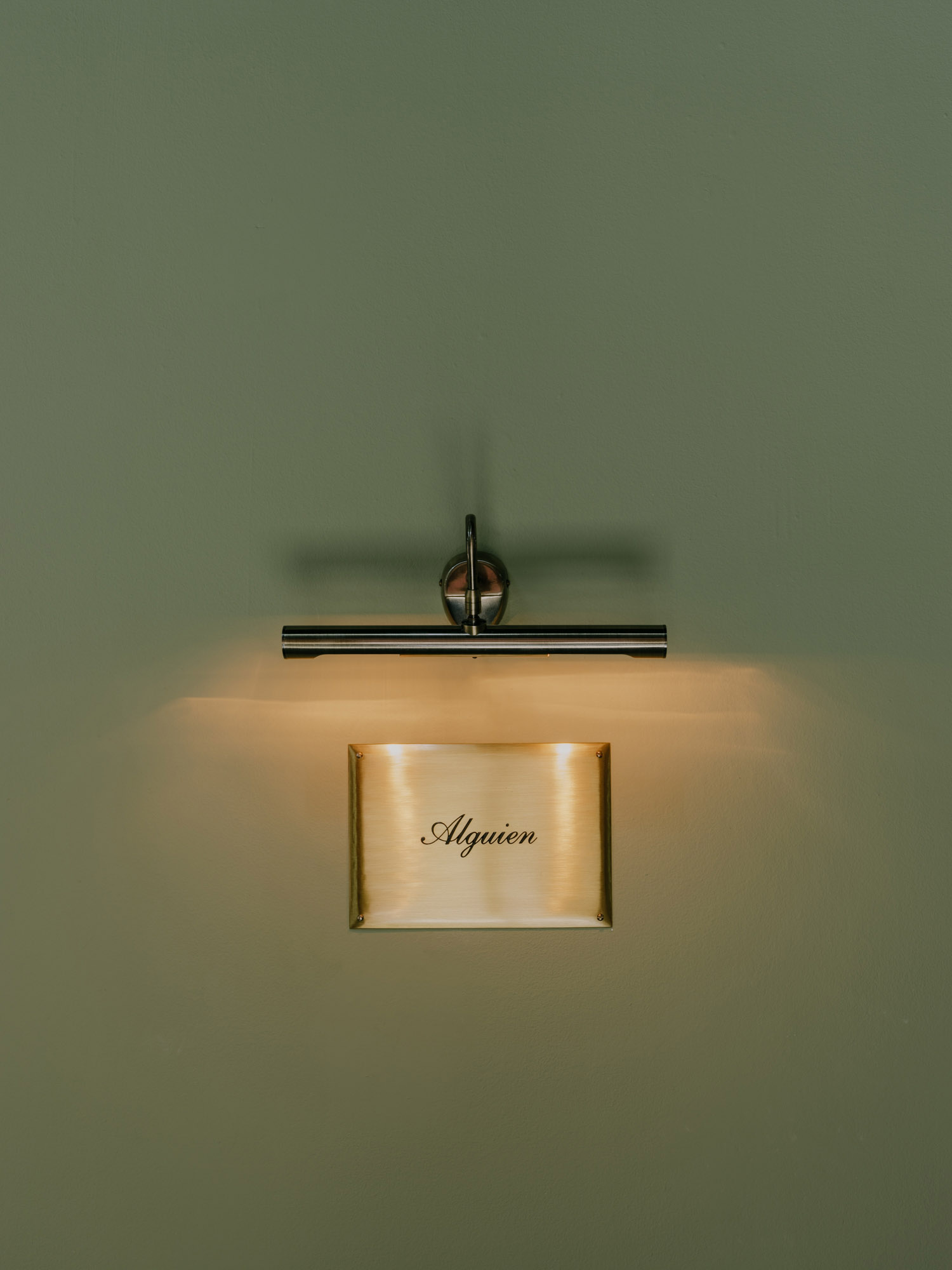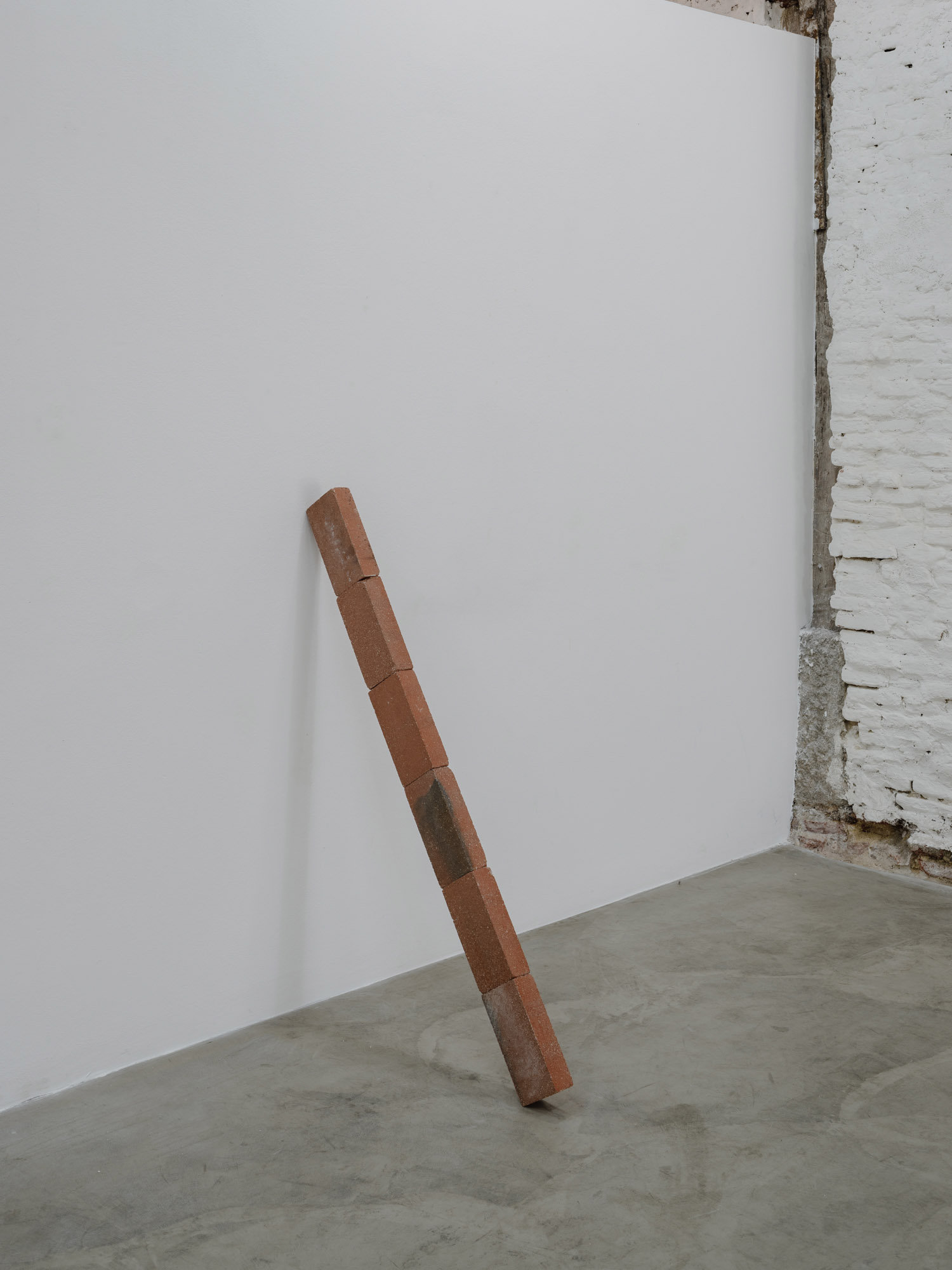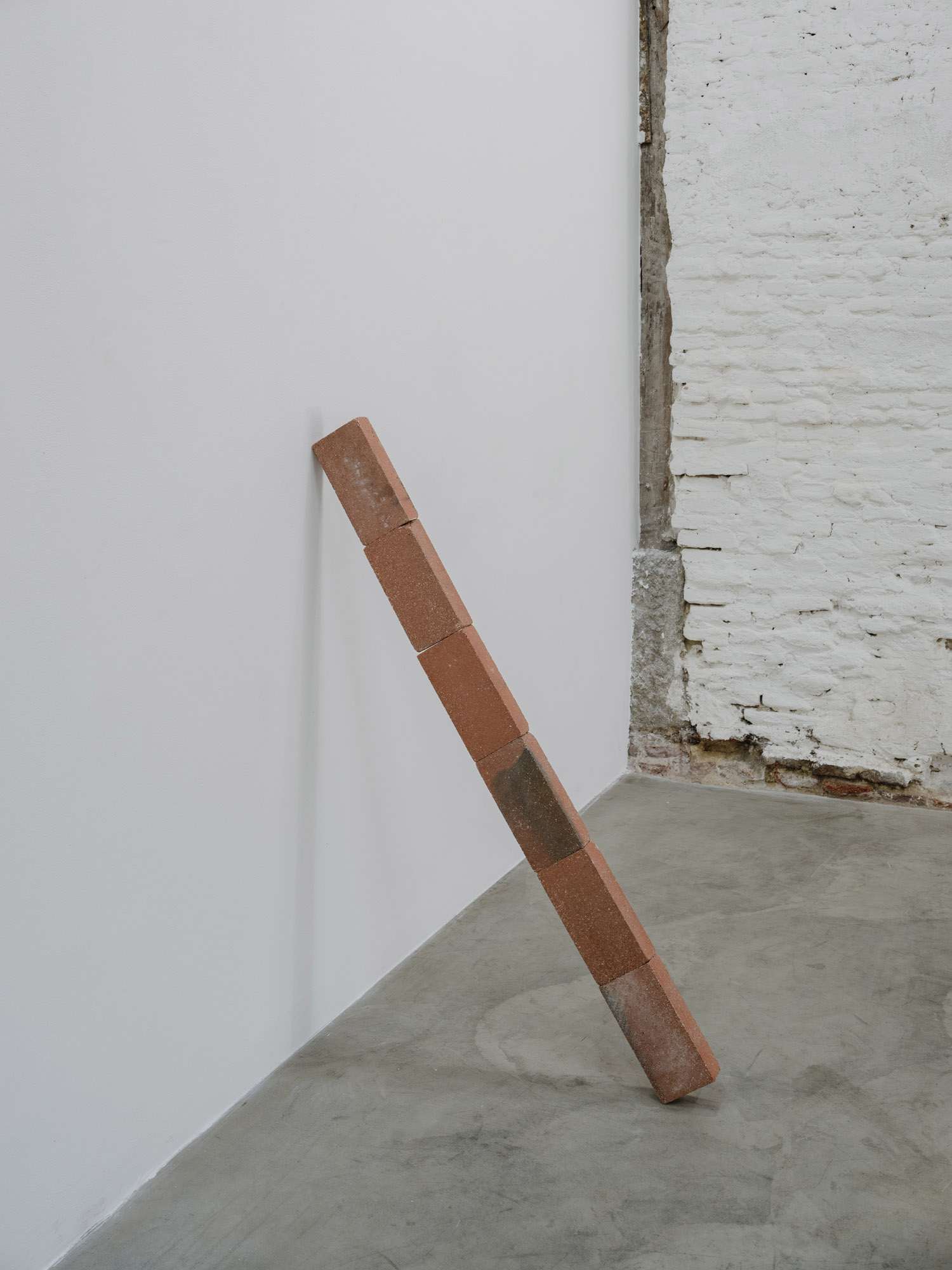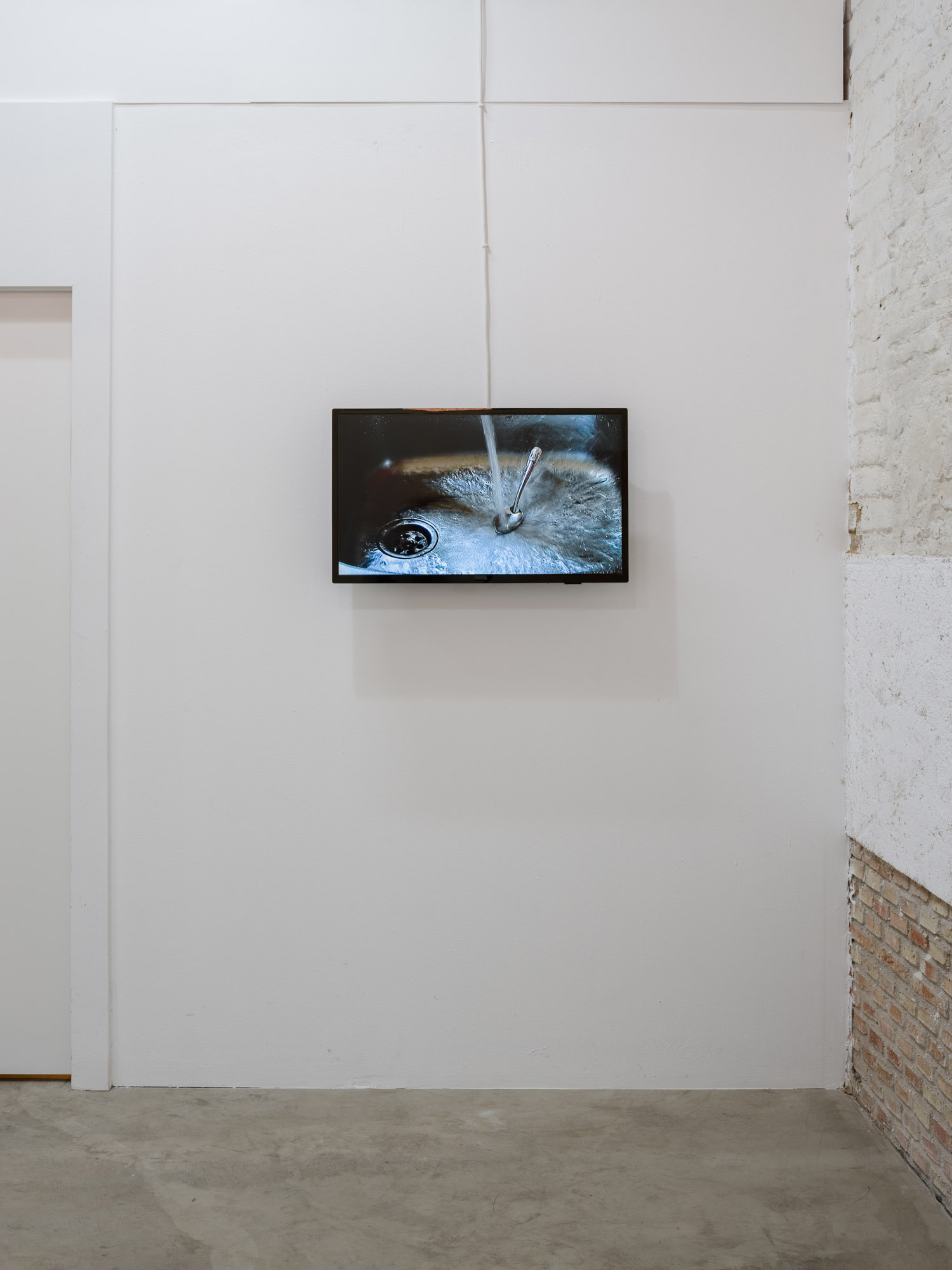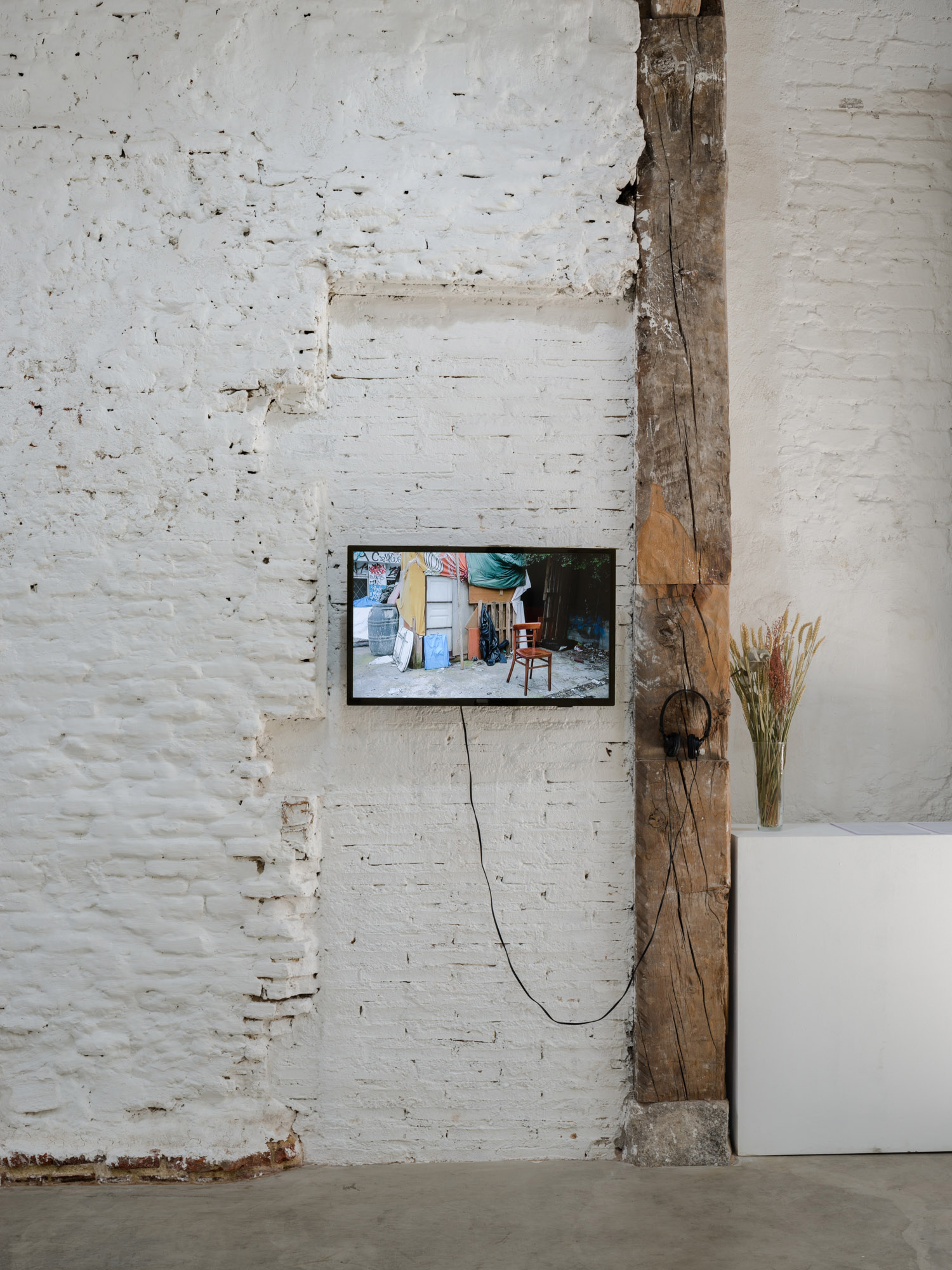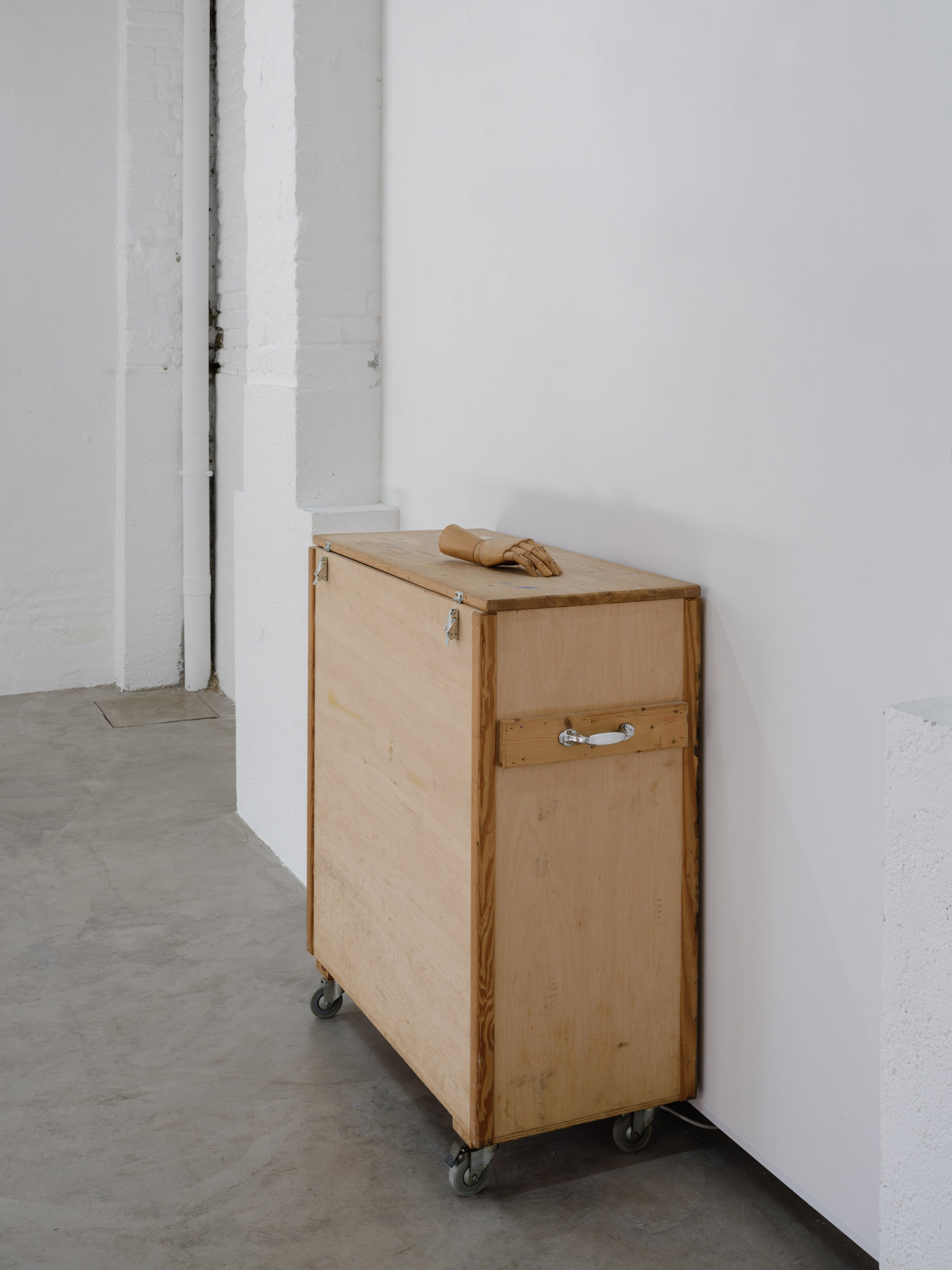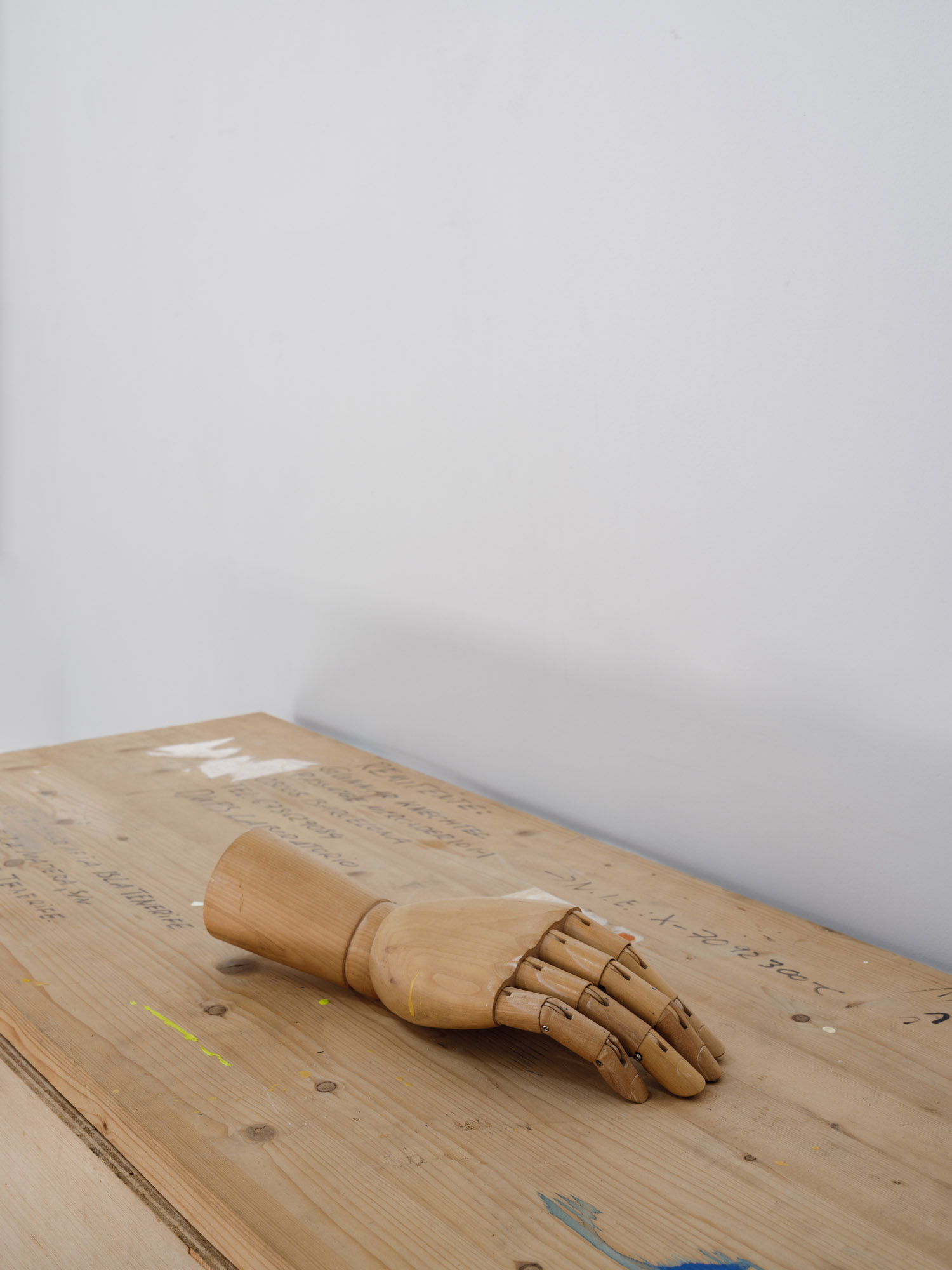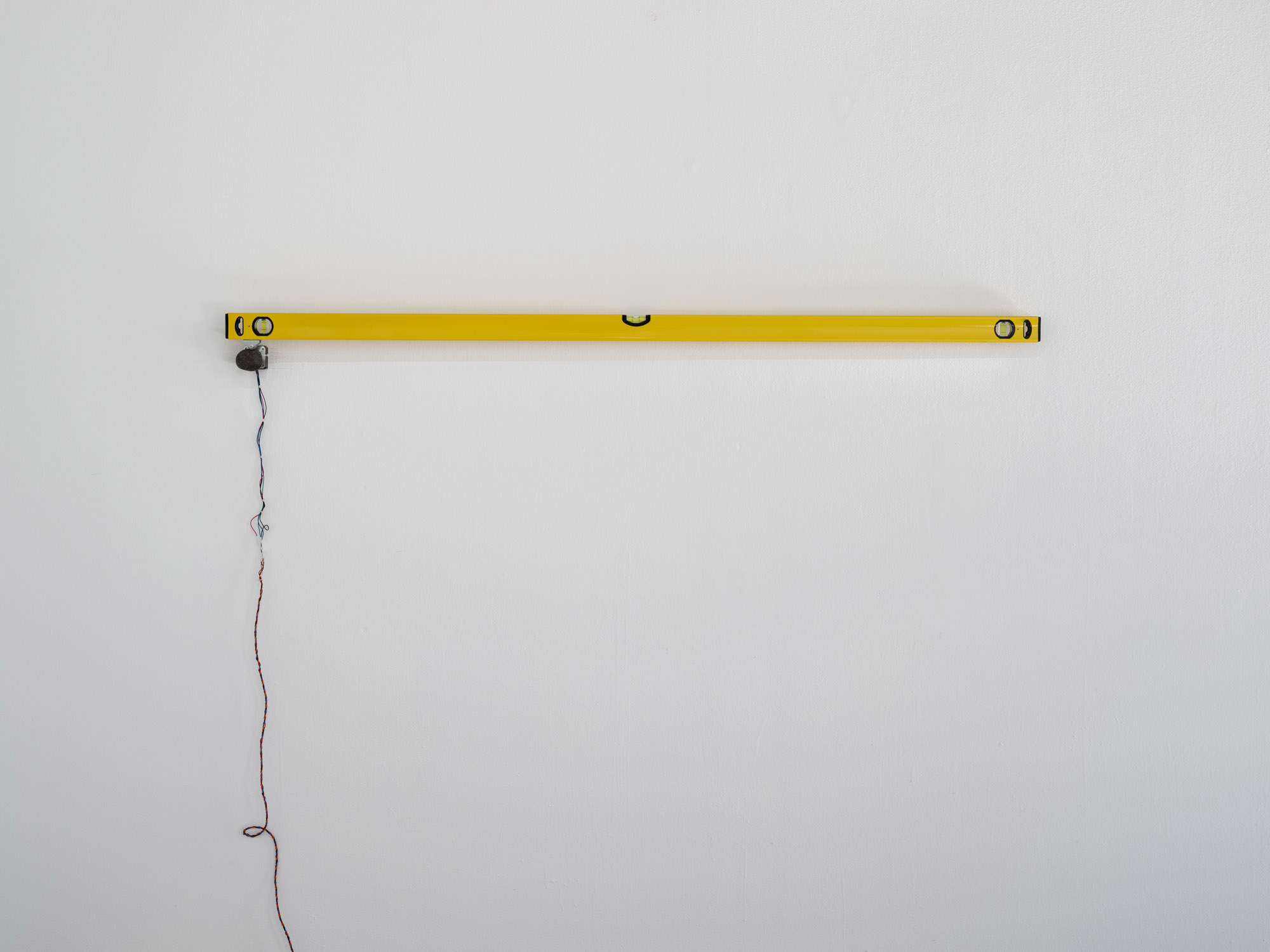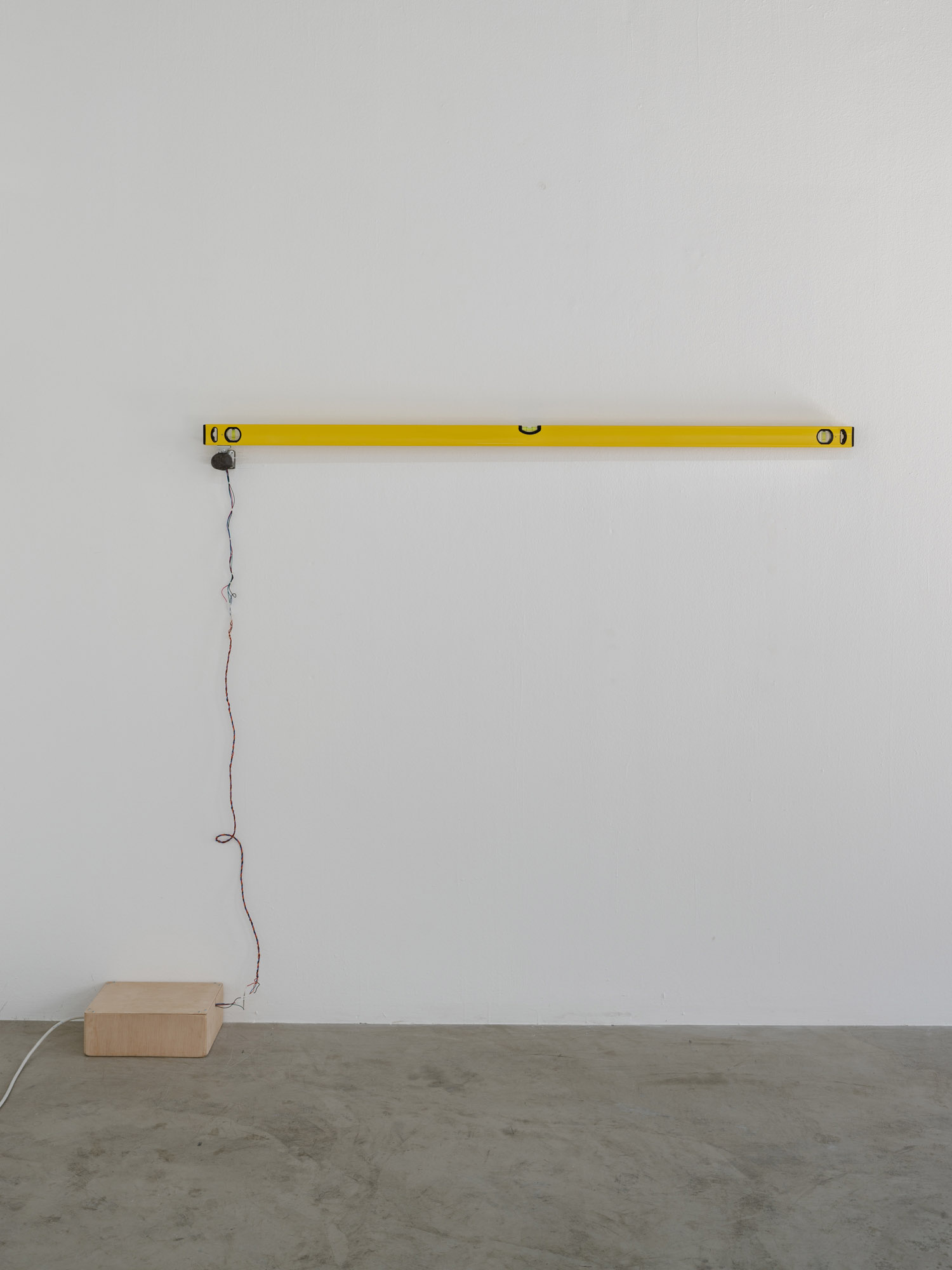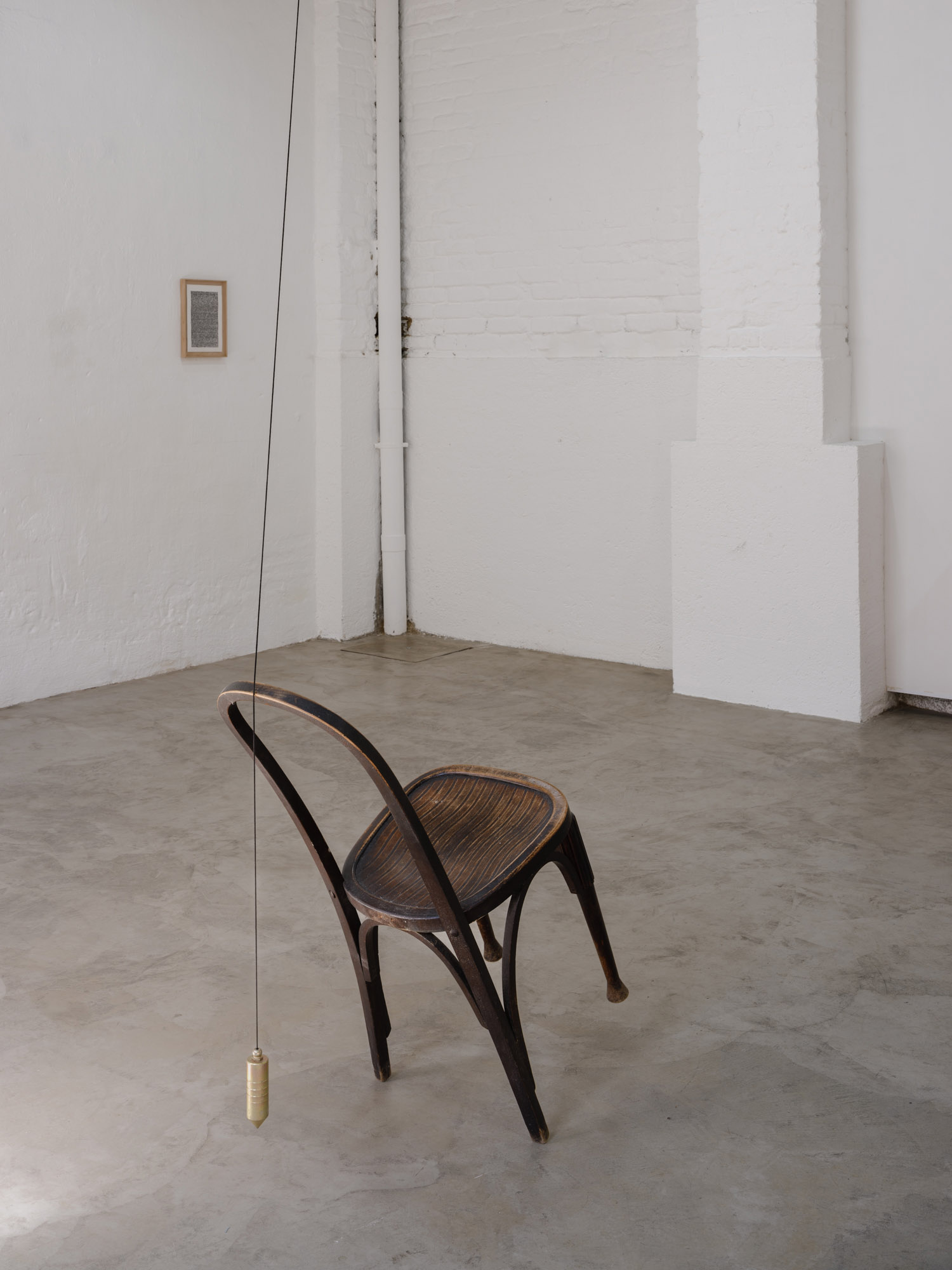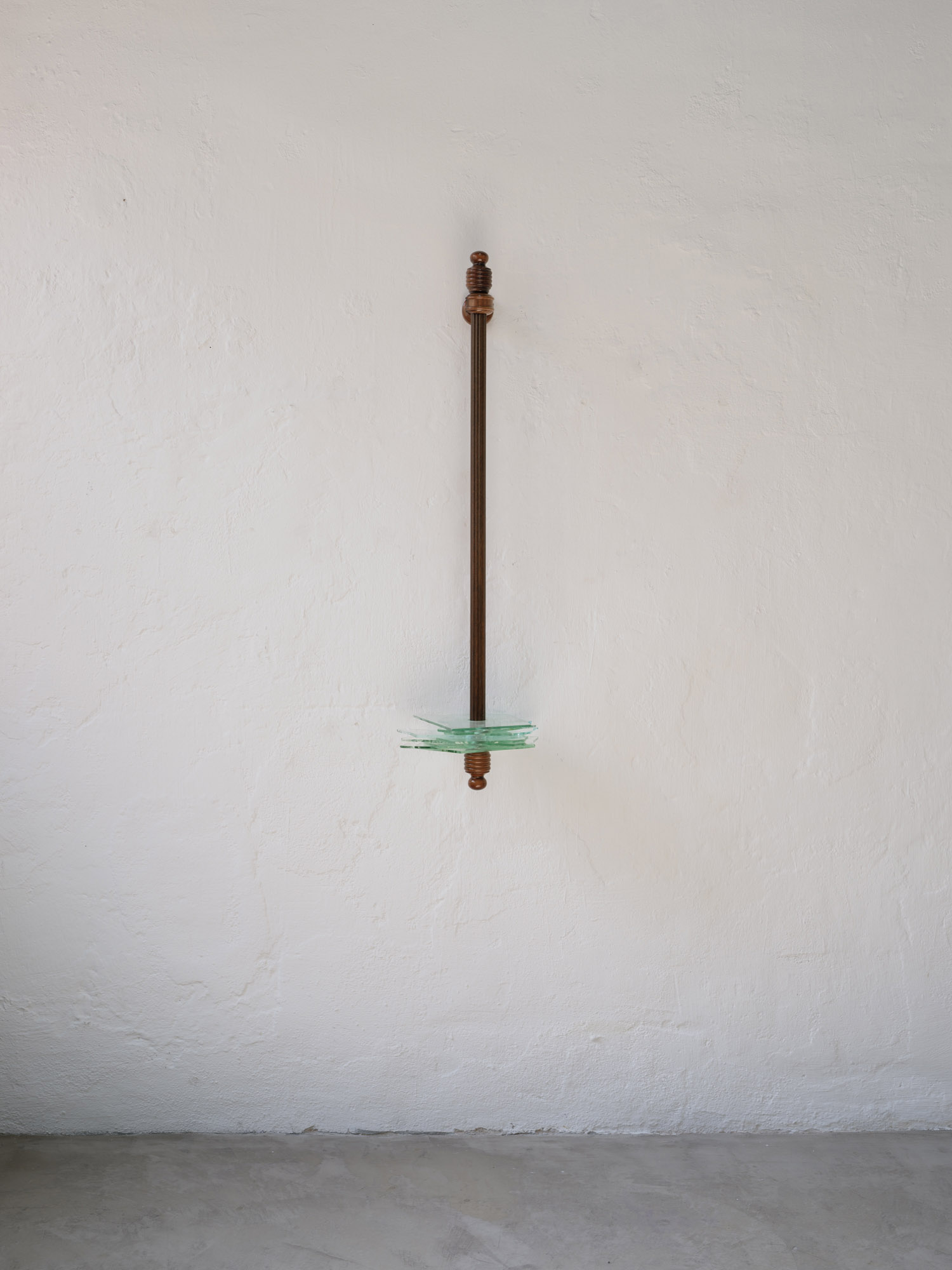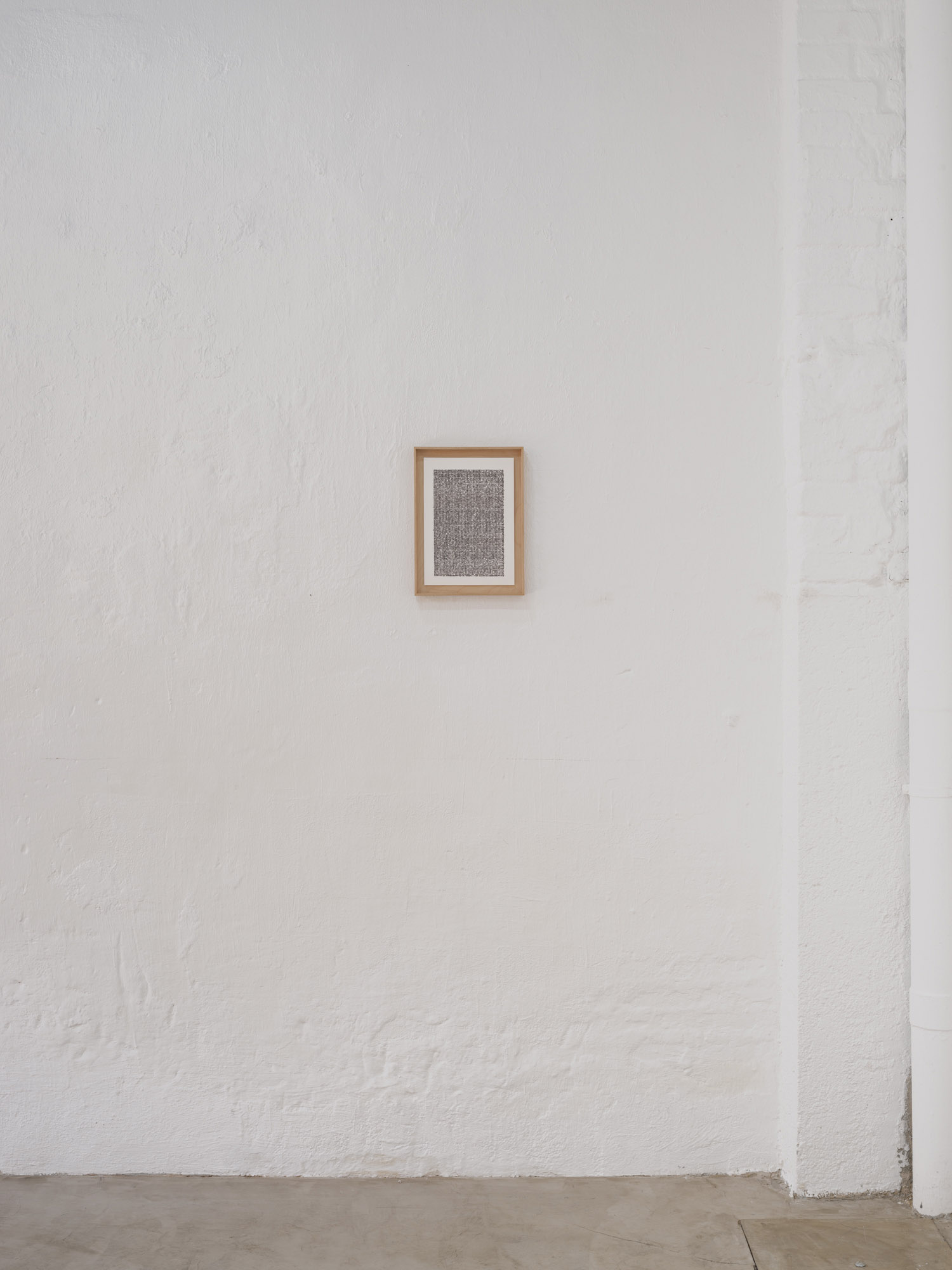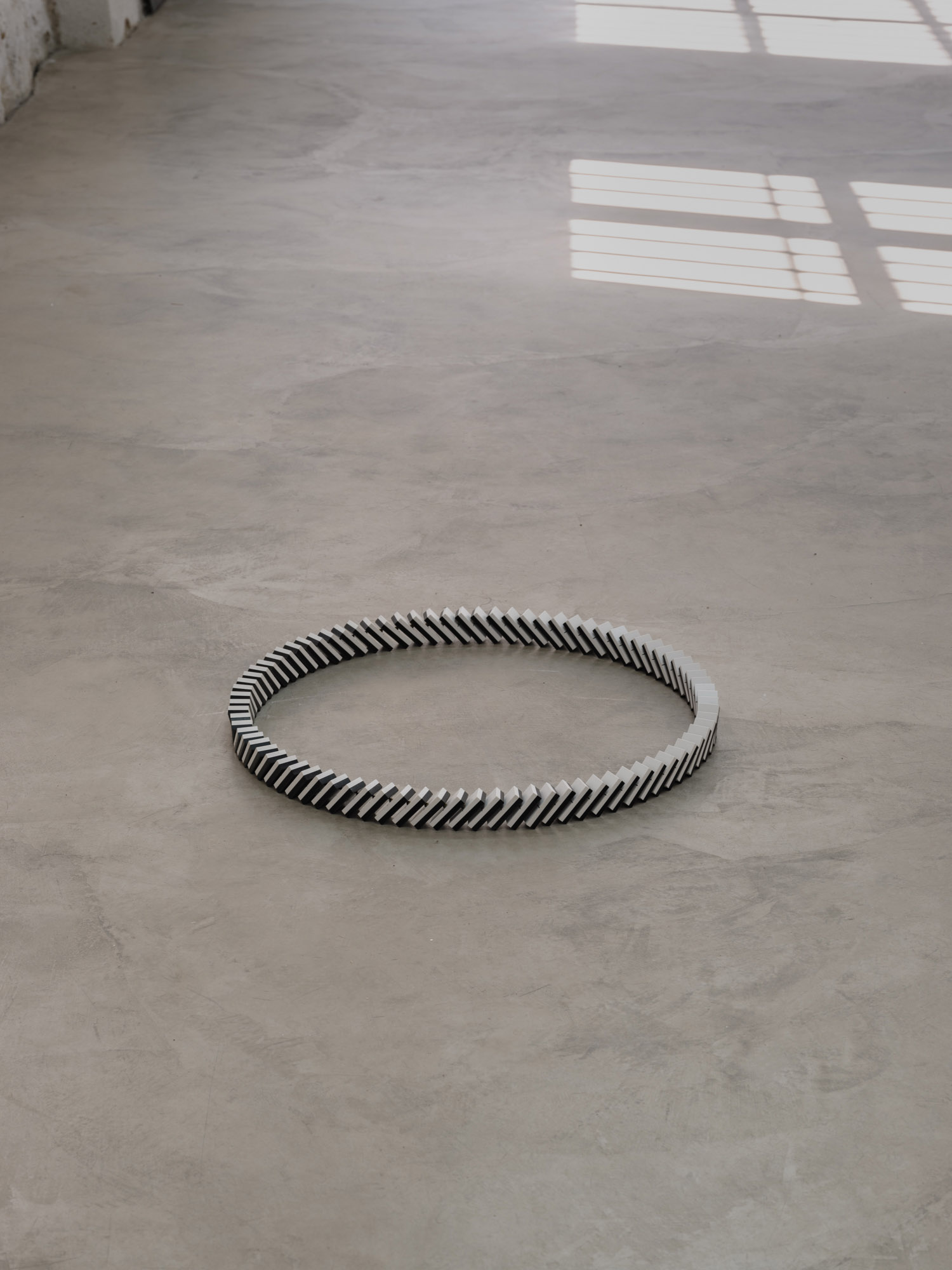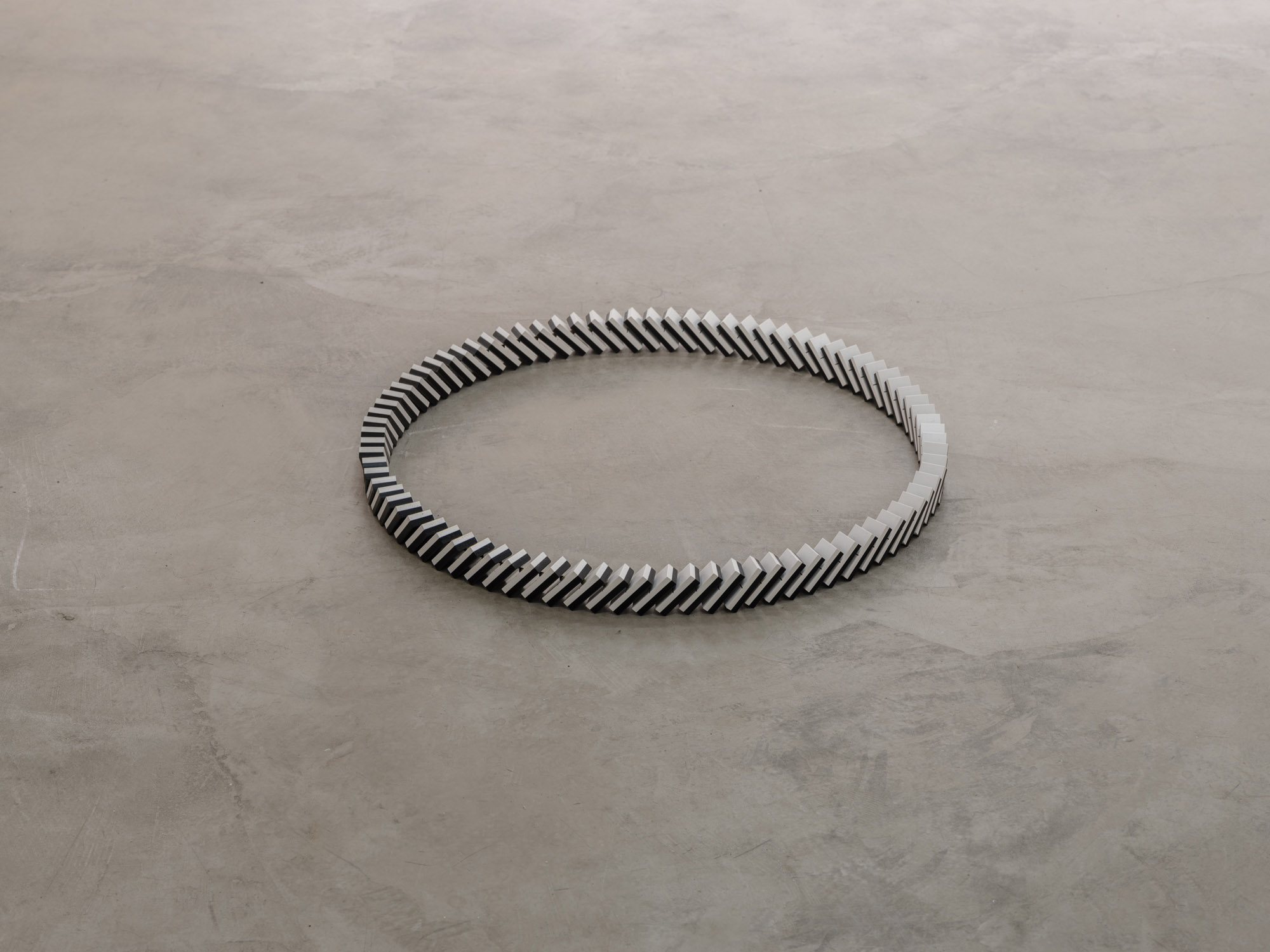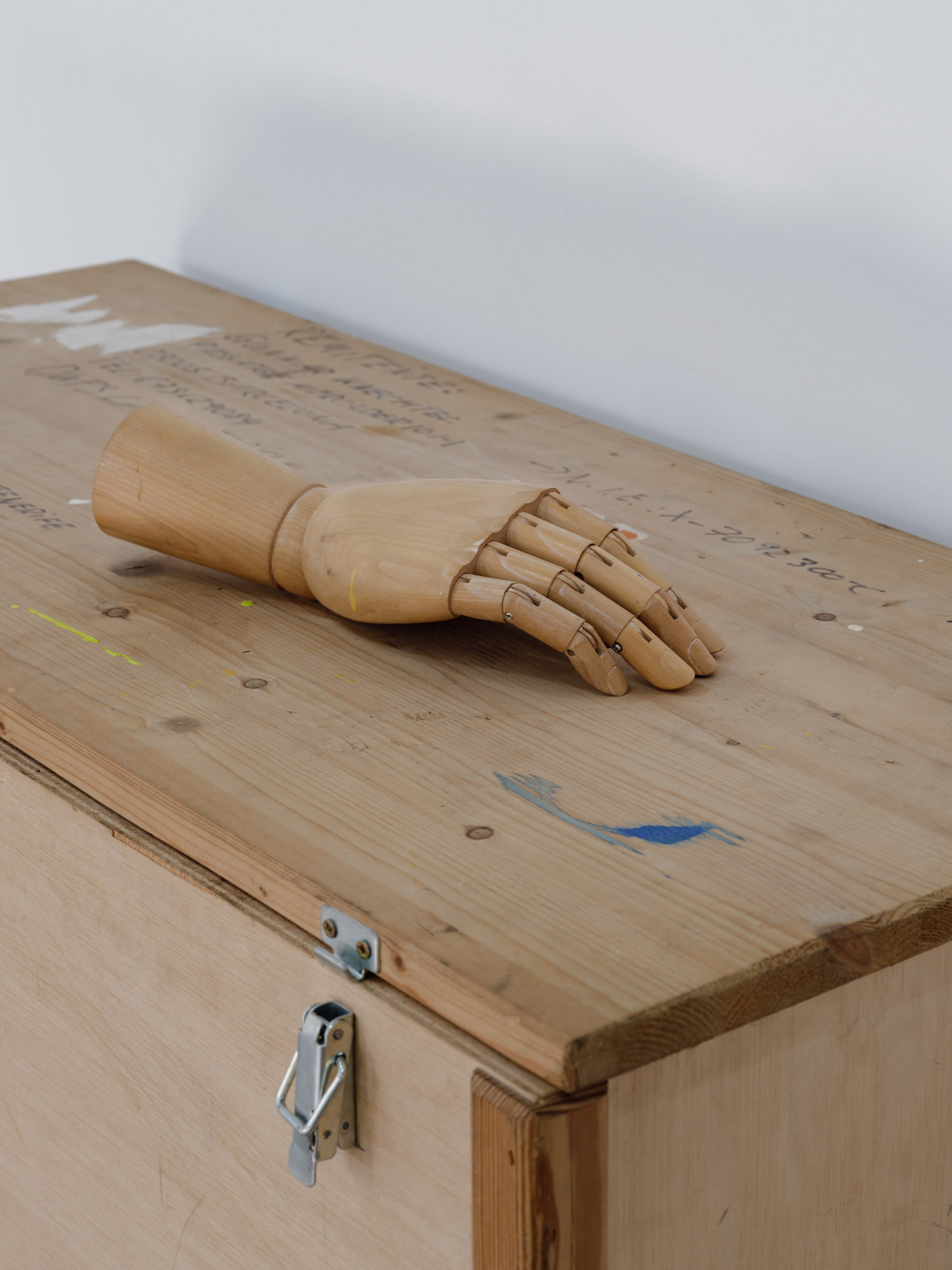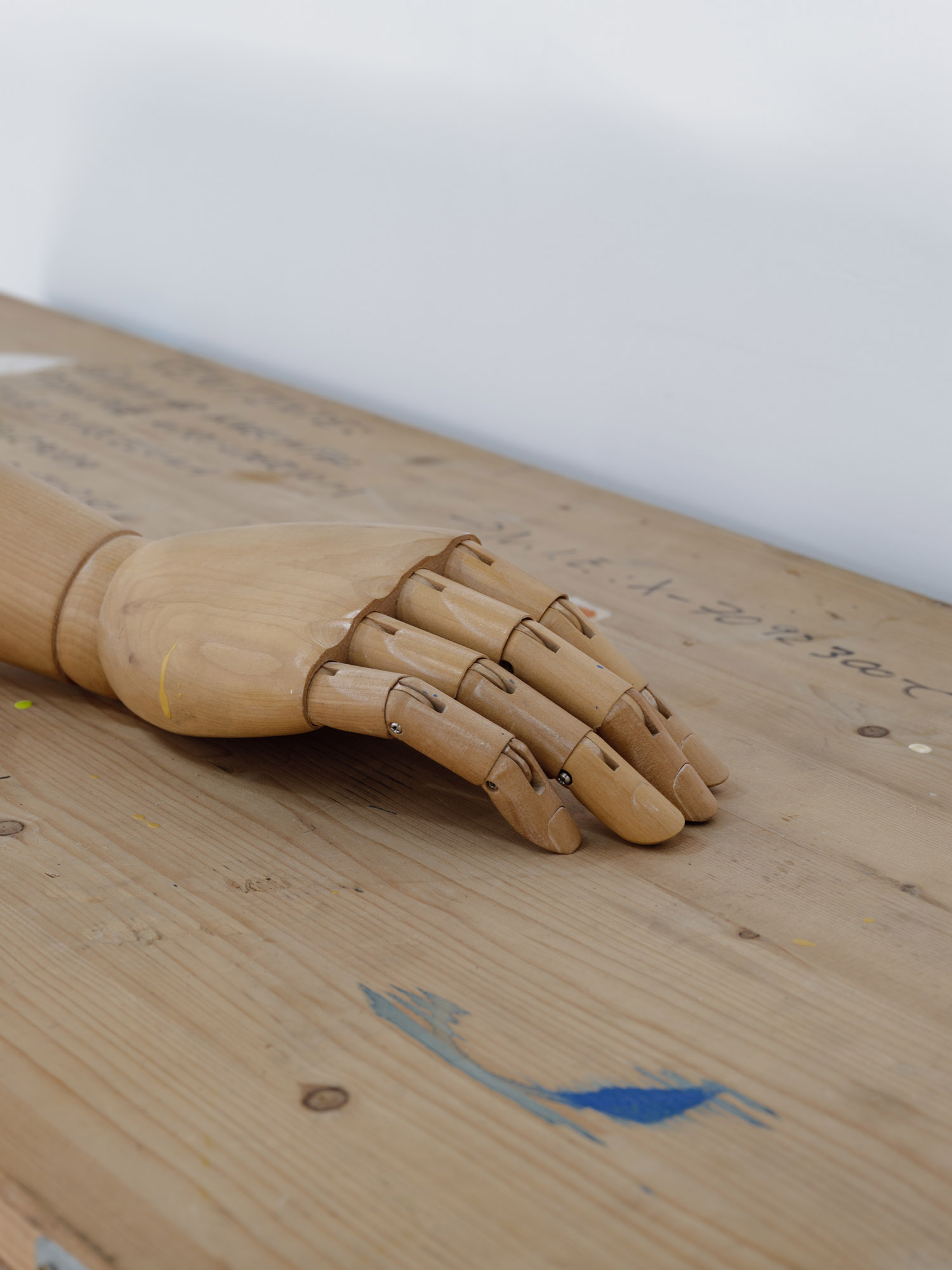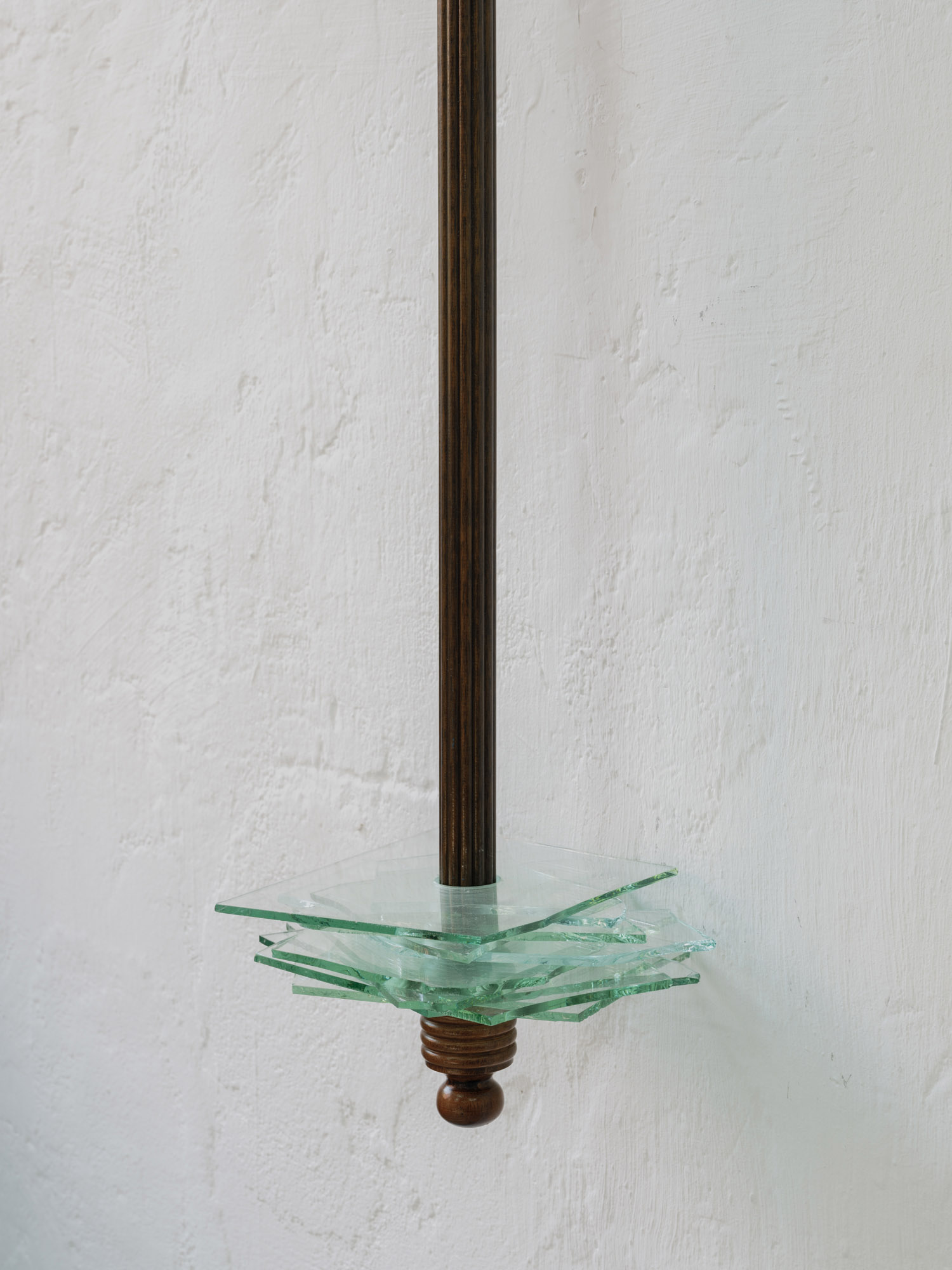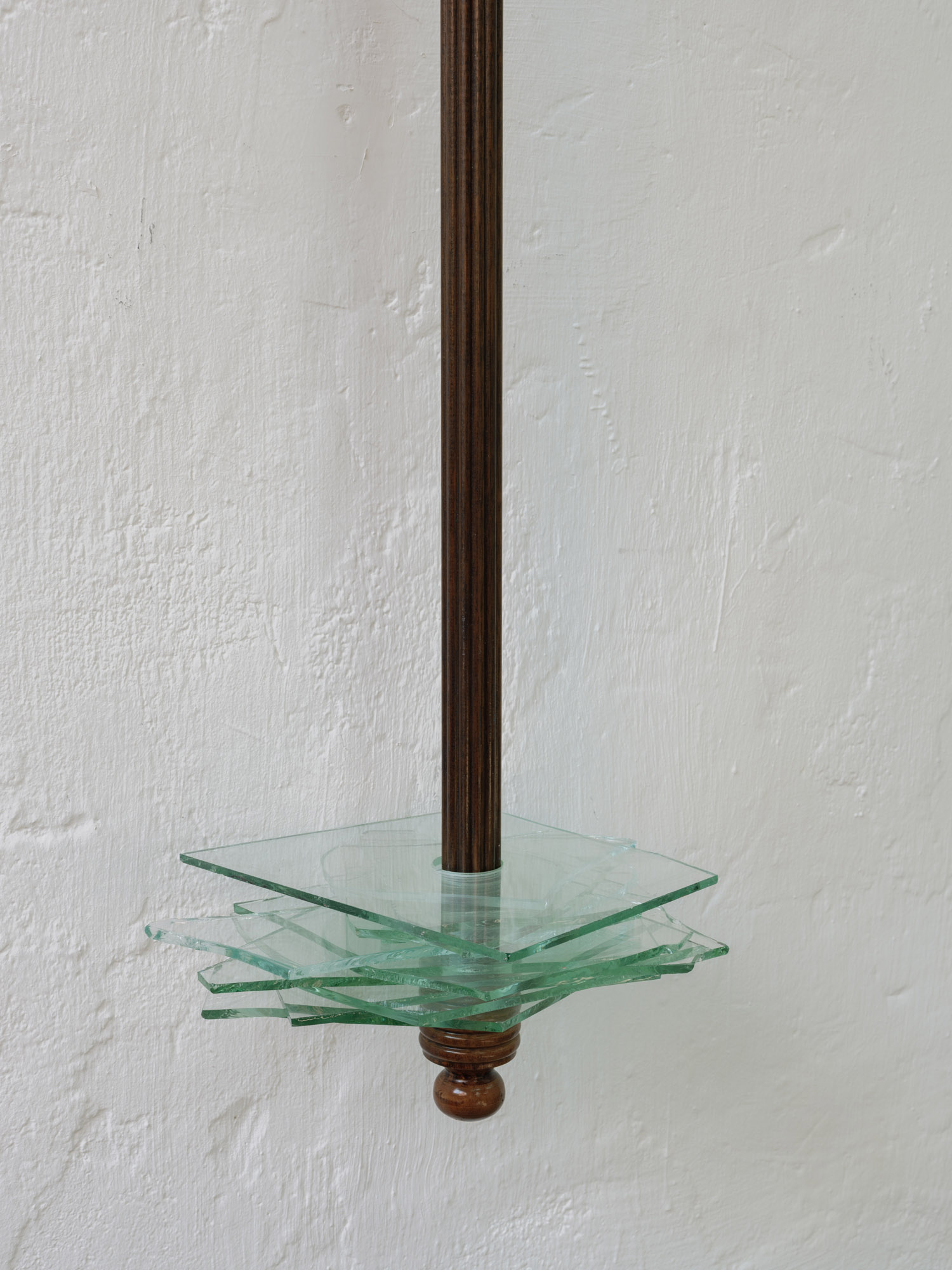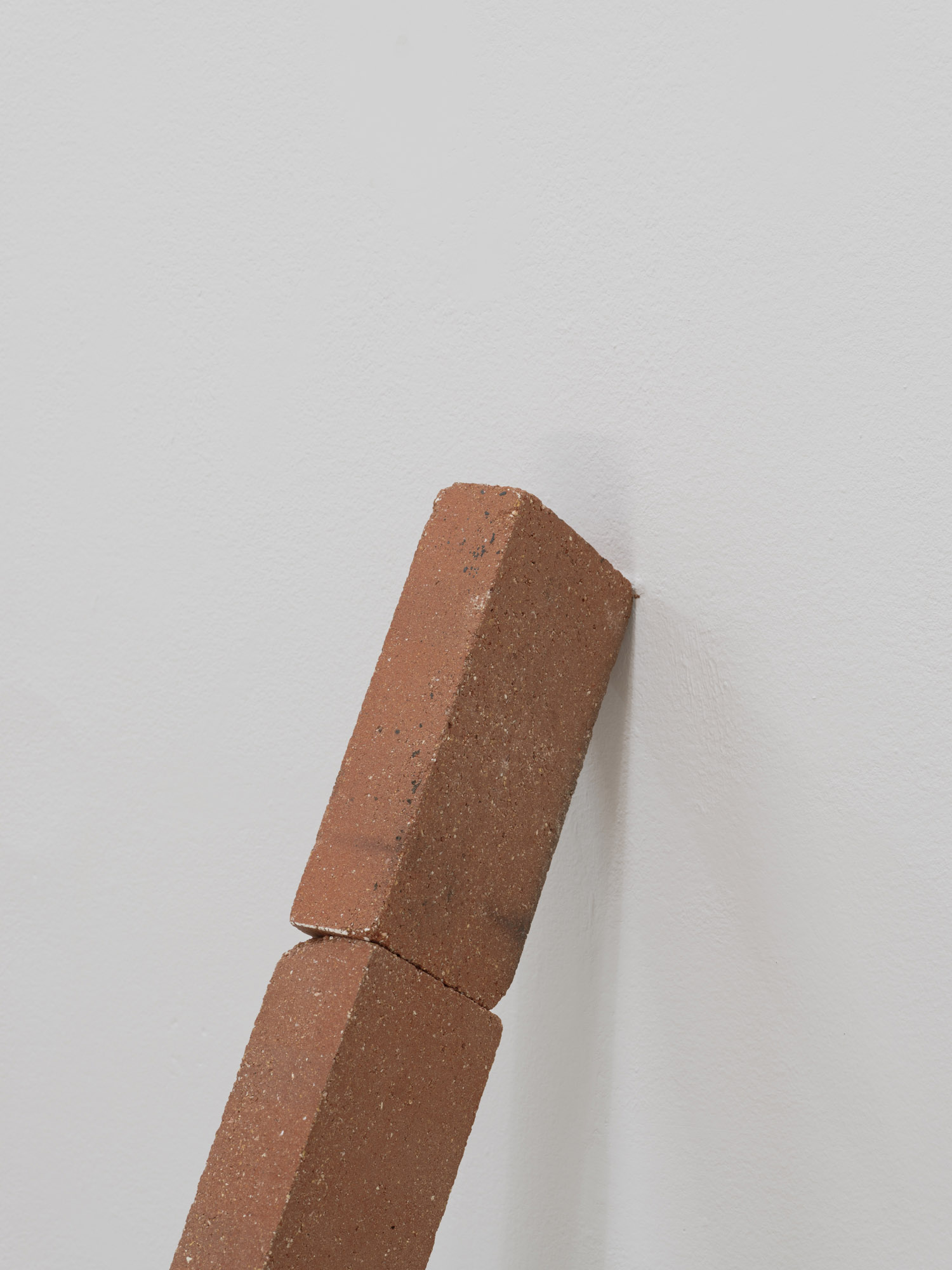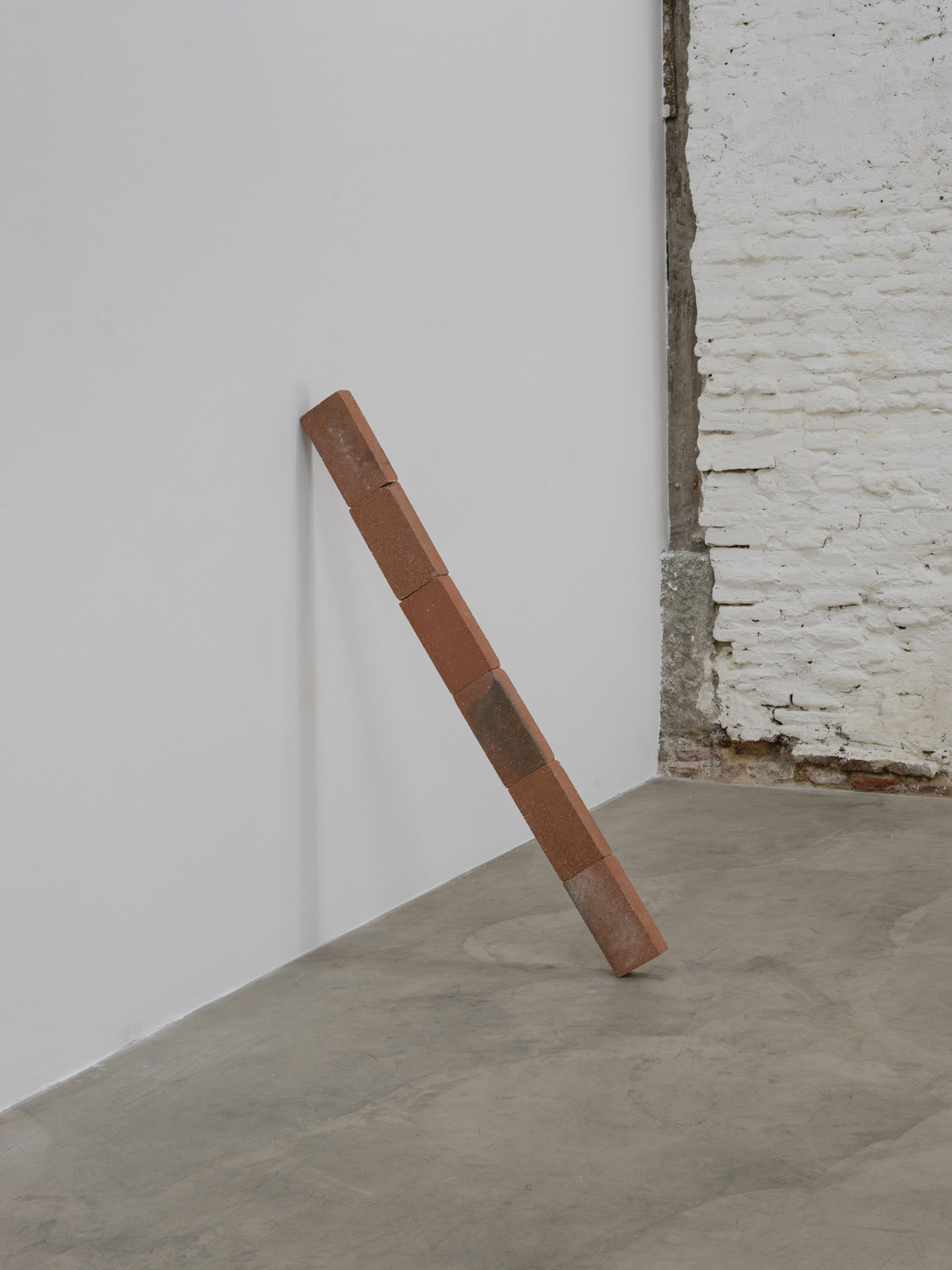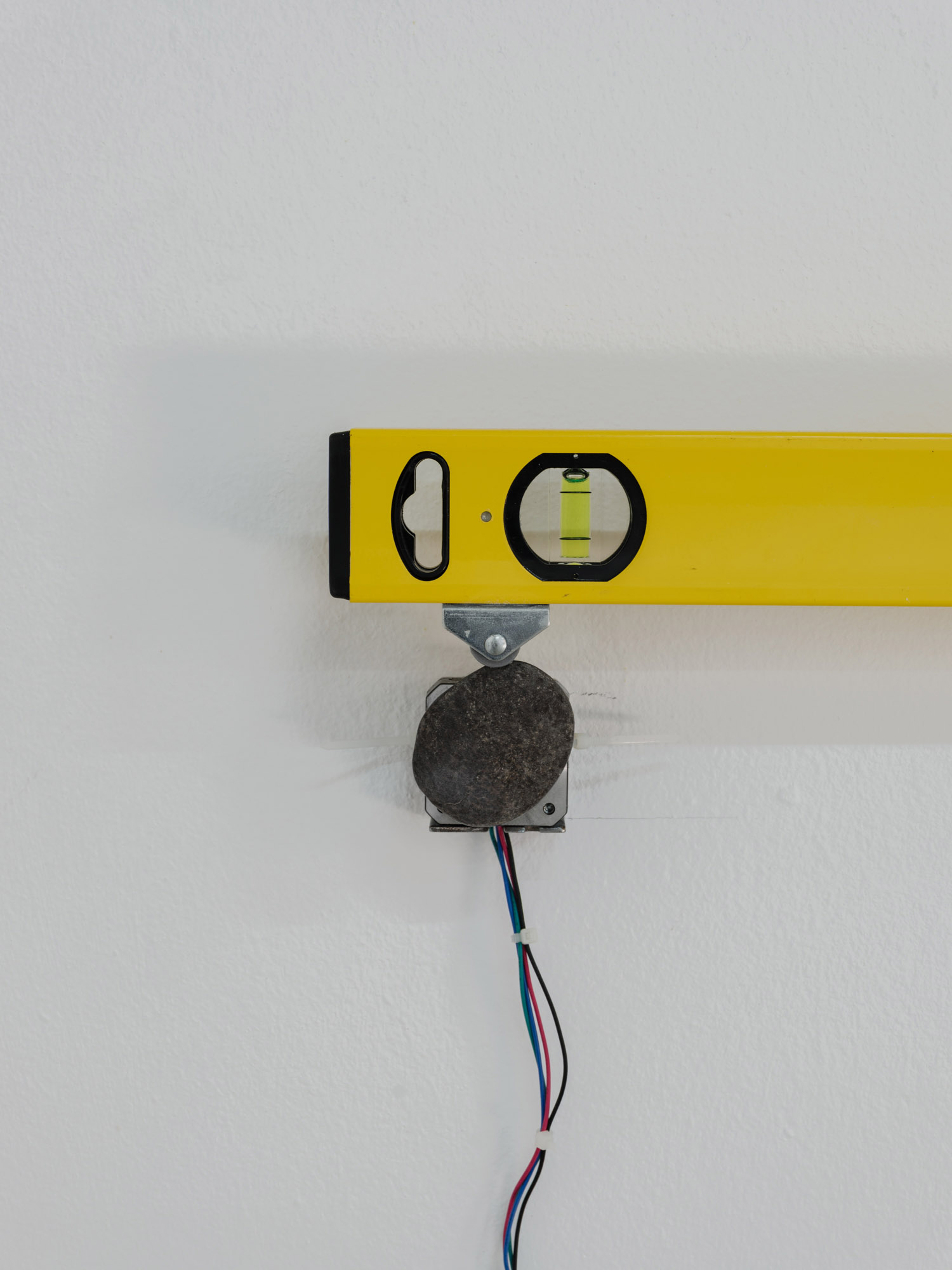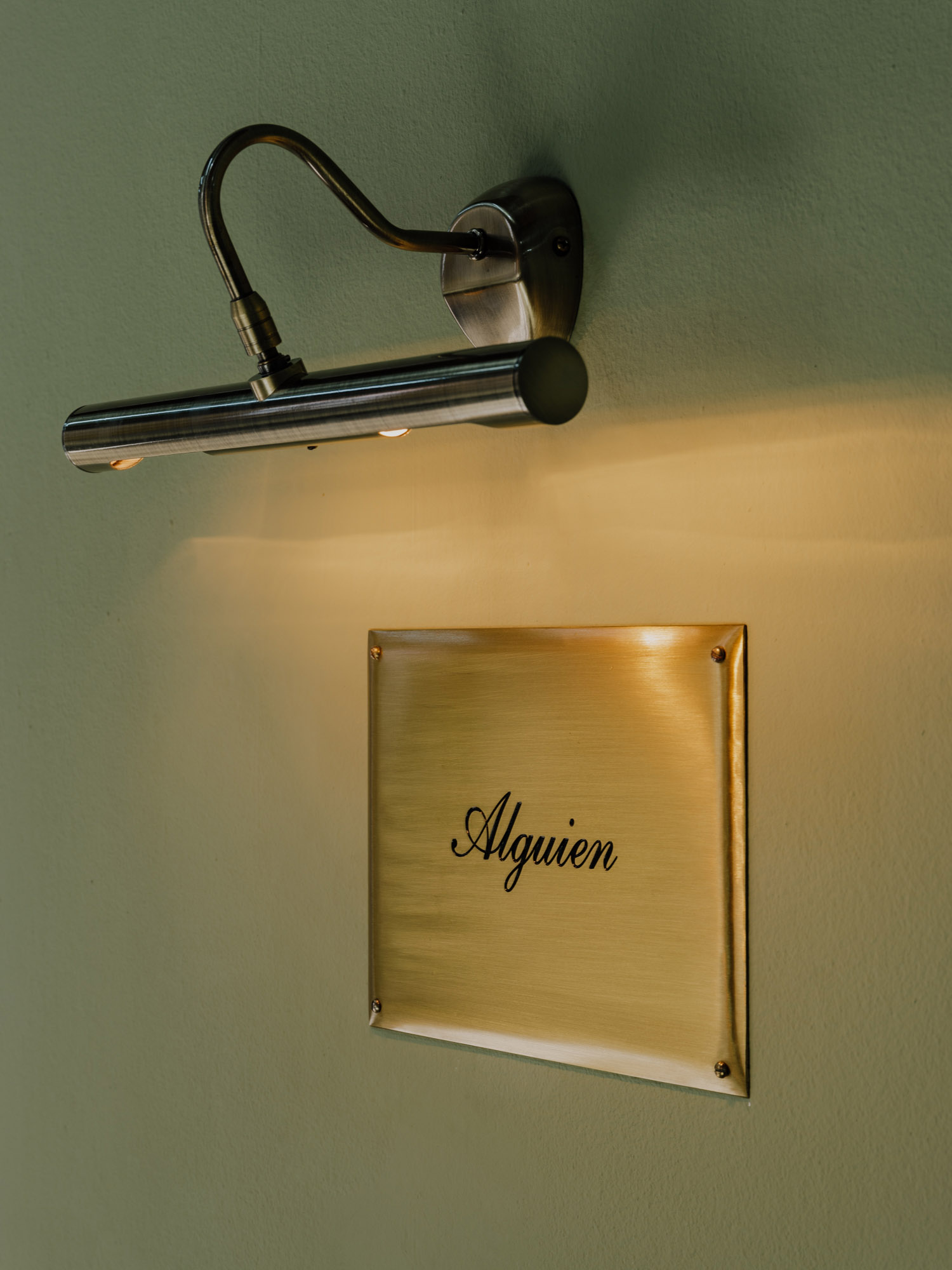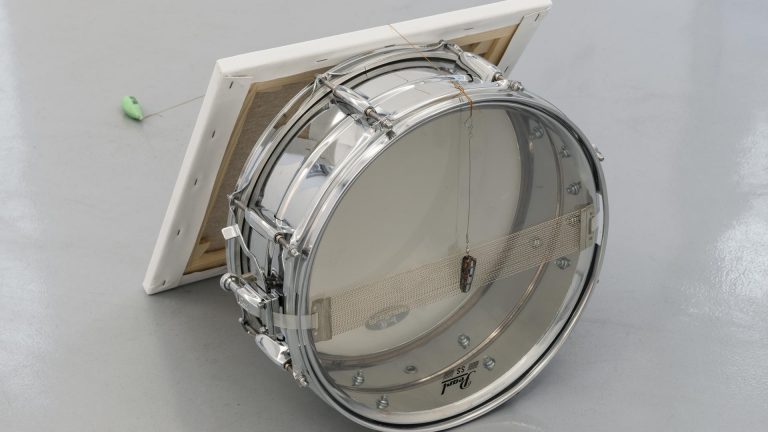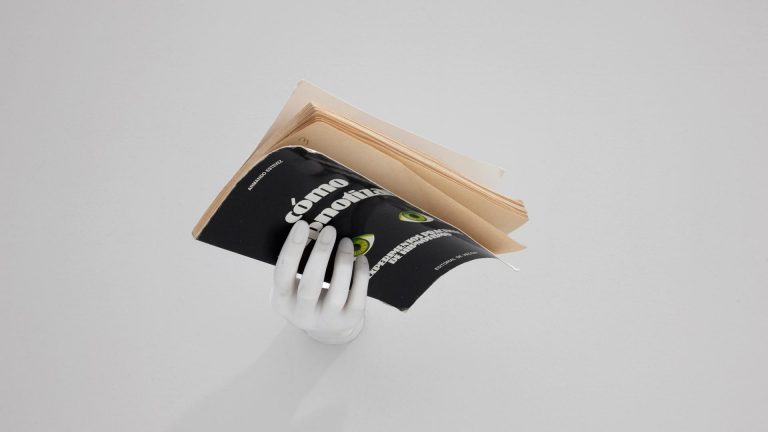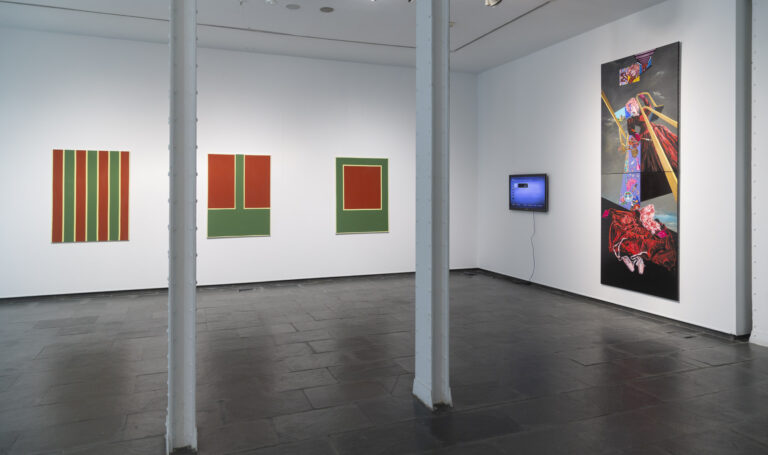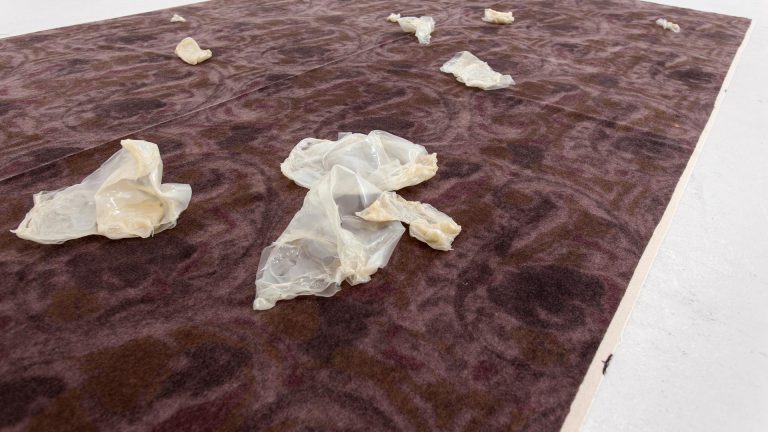Artist: Jaime Pitarch
Exhibition title: The Epicenter of Almost Nothing
Venue: The Ryder, Madrid, Spain
Date: June 2 – July 29, 2023
Photography: Pablo Gómez Ogando / All images copyright and courtesy of the artist and The Ryder, Madrid/London
The epicenter of almost nothing refers to a practically impossible space. The almost is what in itself allows us to speculate that such a space could exist.
It is therefore this almost which serves as a constant for the pieces in the exhibition, several of them being shown in a situation of precariousness or provisionality, or as I tend to explain with regards to the Momentum series: “they are bodies in transit towards collapse. Which seem to be settled, but that sooner or later will fall. It is only our limited perception of time what makes them seem static, resting or firmly supported”. They are, therefore, almost fallen bodies.
This immanent condition, common to all of them, is crucial to understand my work, as well as the fact that I mostly use materials collected from the streets or surplus from second-hand shops, objects contingent to our own rituals of acquisition and discard.
It is not by chance that when I refer to these objects I do so with the word “bodies”, since both their transiting and discarded condition make them suitable as metaphors for human beings, subject to the vicissitudes of life.
Thus, The epicenter of almost nothing does not speak about, but rather, it emerges from my own experience, based on the forced decision to stop producing, taken when I was overcome by the imperative need to accompany my children, still at an early age, in their daily lives, given my wife’s extreme work schedules which prevented family reconciliation. The arrival of the pandemic, which resulted in my hospitalization, followed by serious medical consequences and health problems, were circumstances which inevitably altered my faith with regards to the ability to return back to work, or what we would call, in terms of social acceptance, reincorporating myself into the productive logic.
For this exact reason, the exhibition has also incorporated some works that forward to a situation of tense waiting, like the articulated wooden hand that clatters on a recycled shipping crate, or the question of who or what am I, that has hovered over these four years, and which is translated into this plaque that shows the word “Alguien” (Someone) as the only caption, as a way of questioning the meaning that professional fulfillment (or its absence) has acquired in the construction of a person’s identity.
My decision to step aside, too complex to explain in the brief space of a sheet of paper such as the one you now hold in your hands (nor do I aspire to justify it) has provided me a framework for reflection with which to deal with the accidents that stood in my way, until I was able to push myself forward to produce again.
It has served to experience a portion of the frustration and pain that so many women, my own mother for example, had to experience when they had to give up their own professional development in order to take care of her children and the subsequent domestic chores. Additionally, it has also served to question to what extent this is not only a patriarchal issue, but also the result of a capitalist system that makes demands on people, regardless of the situation they find themselves in, which can lead to their disempowerment and make their reintegration very difficult, as alluded to in Endless fall into the void.
Dealing with all this does not come in easily when confidence is lost or mental clarity is clouded. One then enters another form of confinement, self-imposed, and much more radical than that which can be imposed by collective agreement. And from which it is much more difficult to escape.
One then enters into nothingness, on the back of doubt, and it is from there, from its epicenter, that some of the works for this exhibition have emerged. Because there was an almost to hold on to.
-Jaime Pitarch

